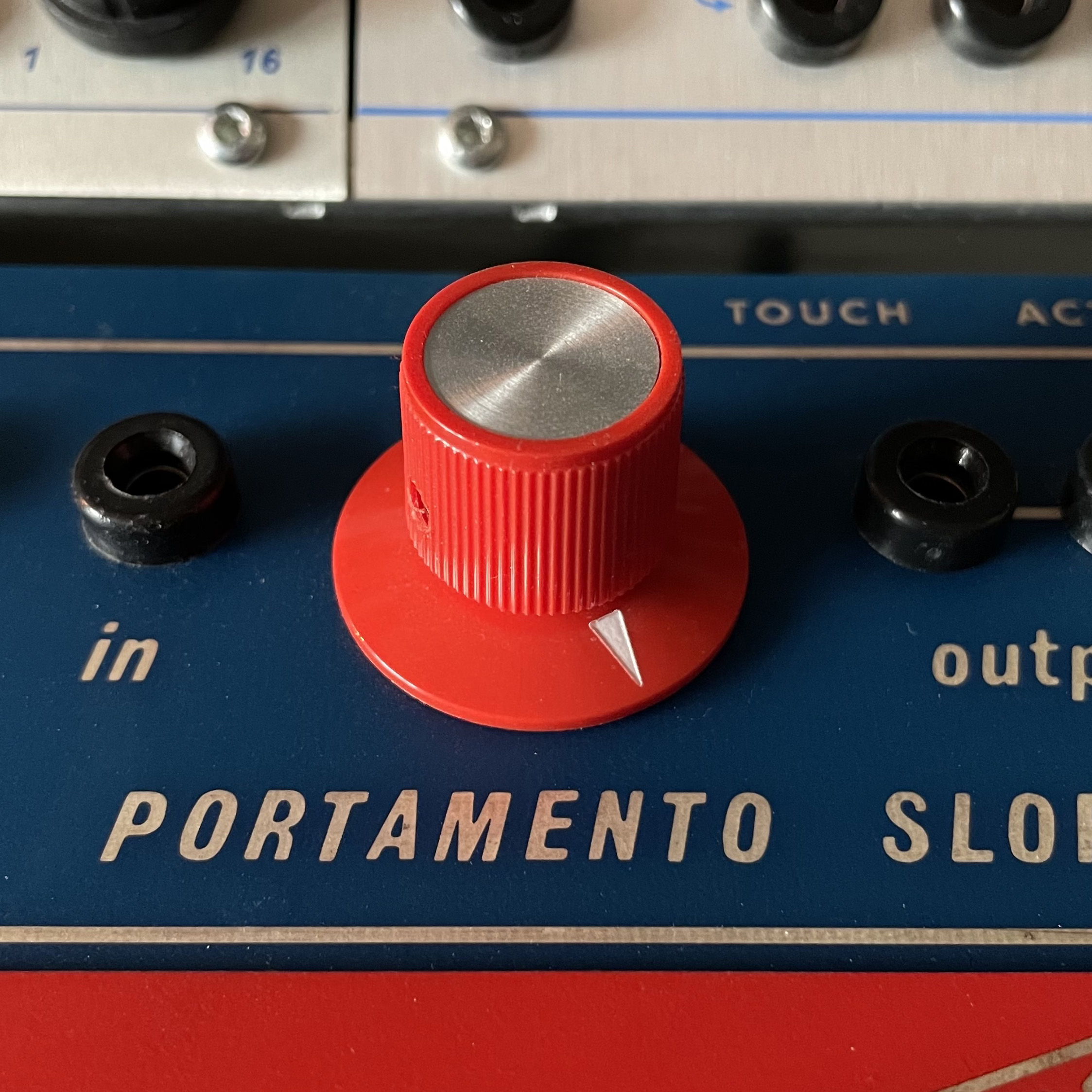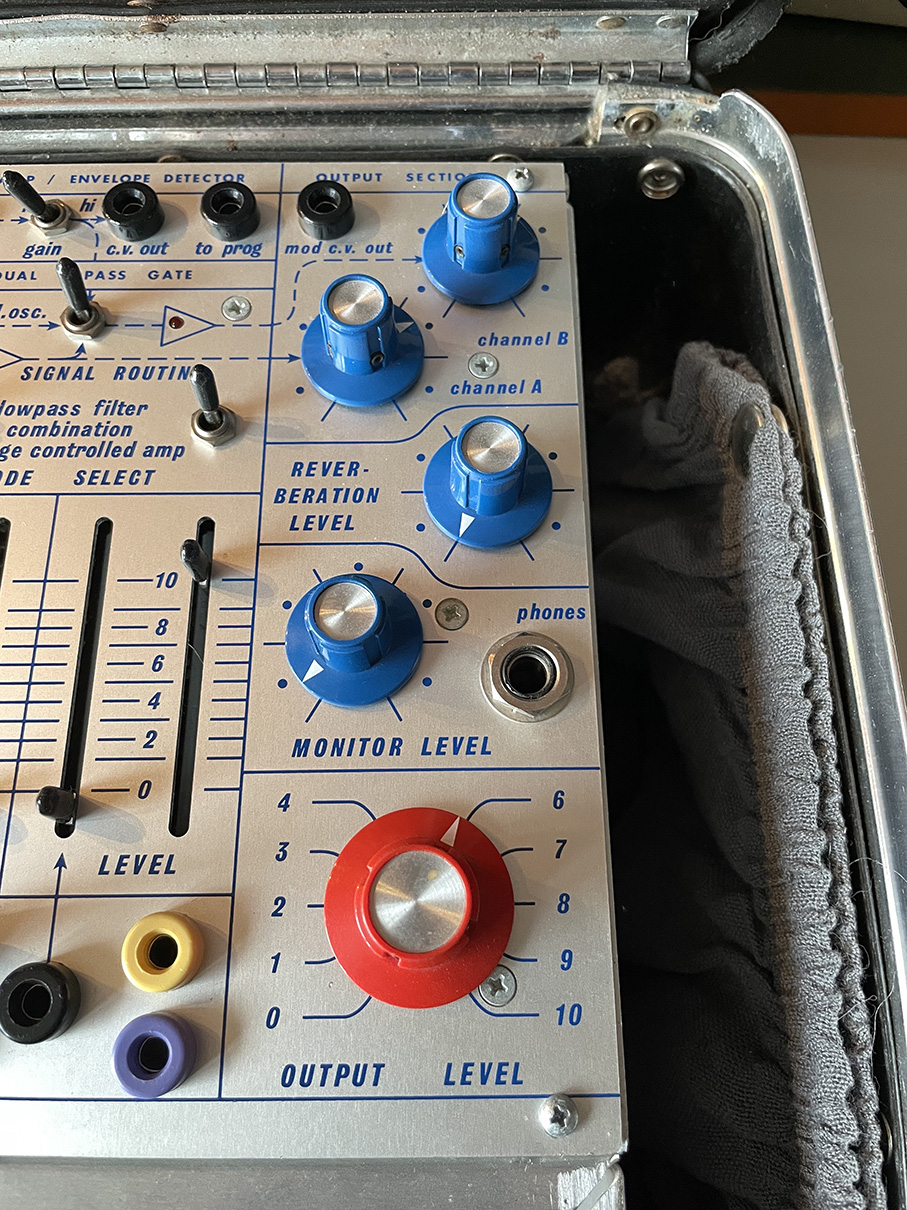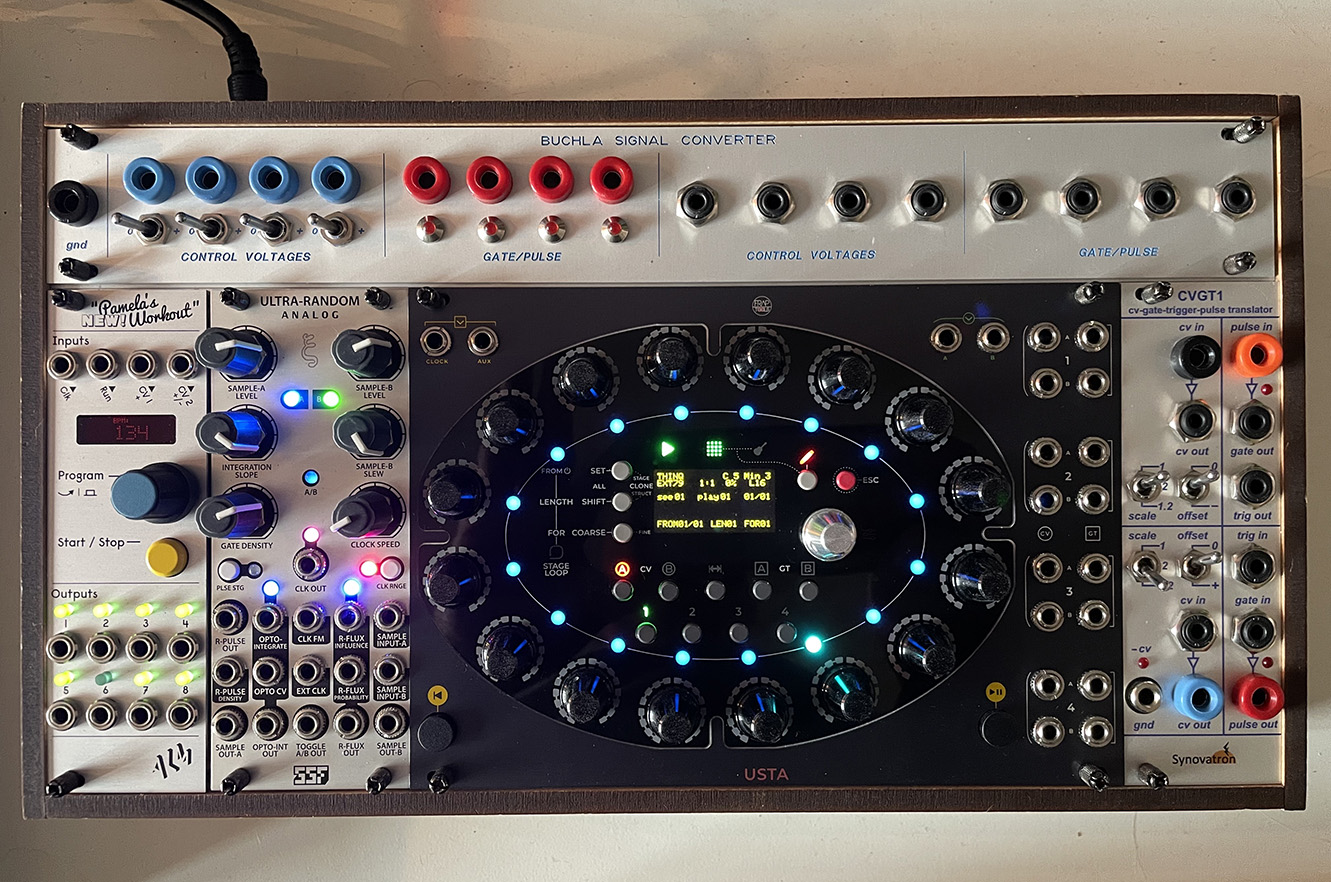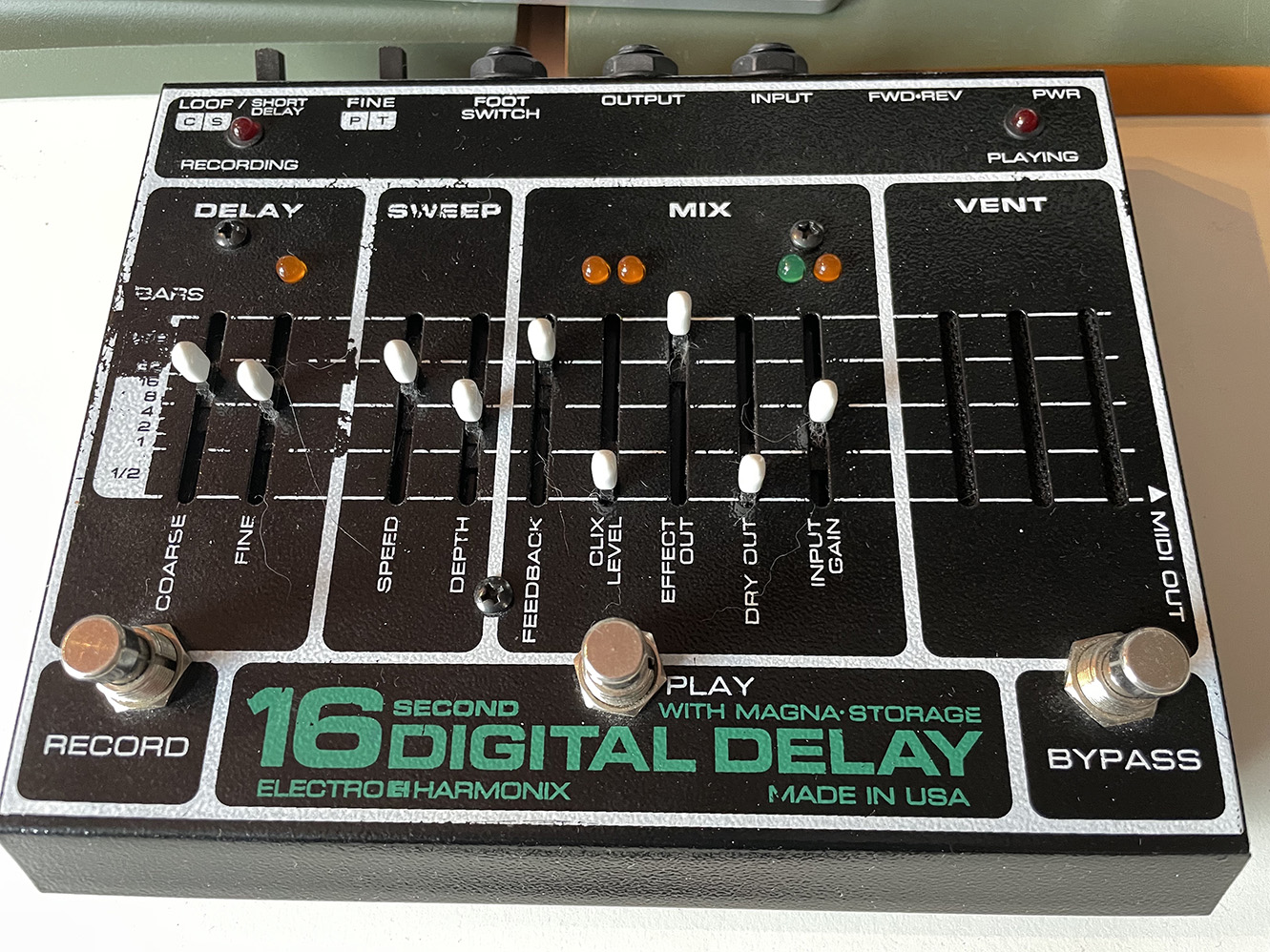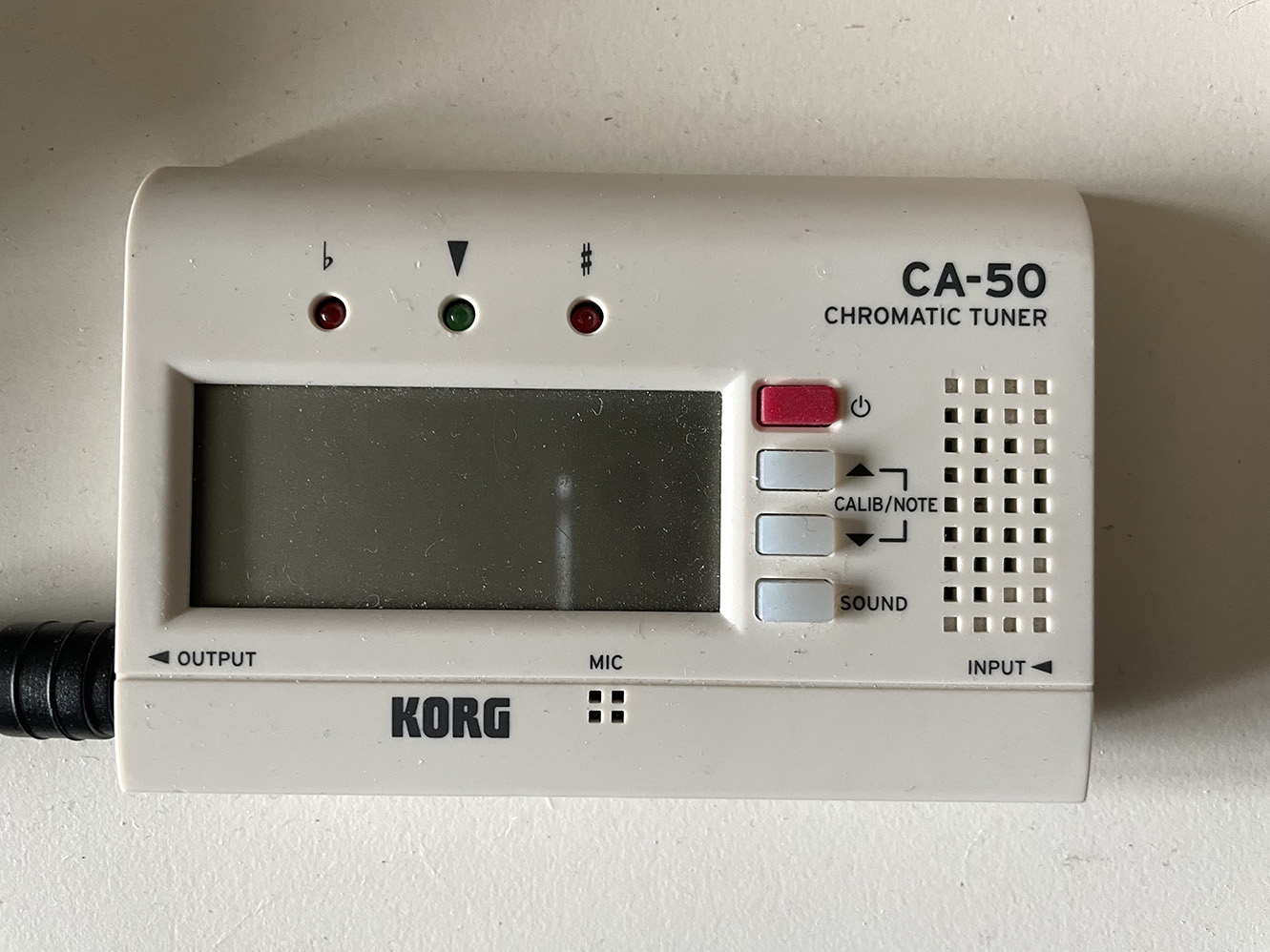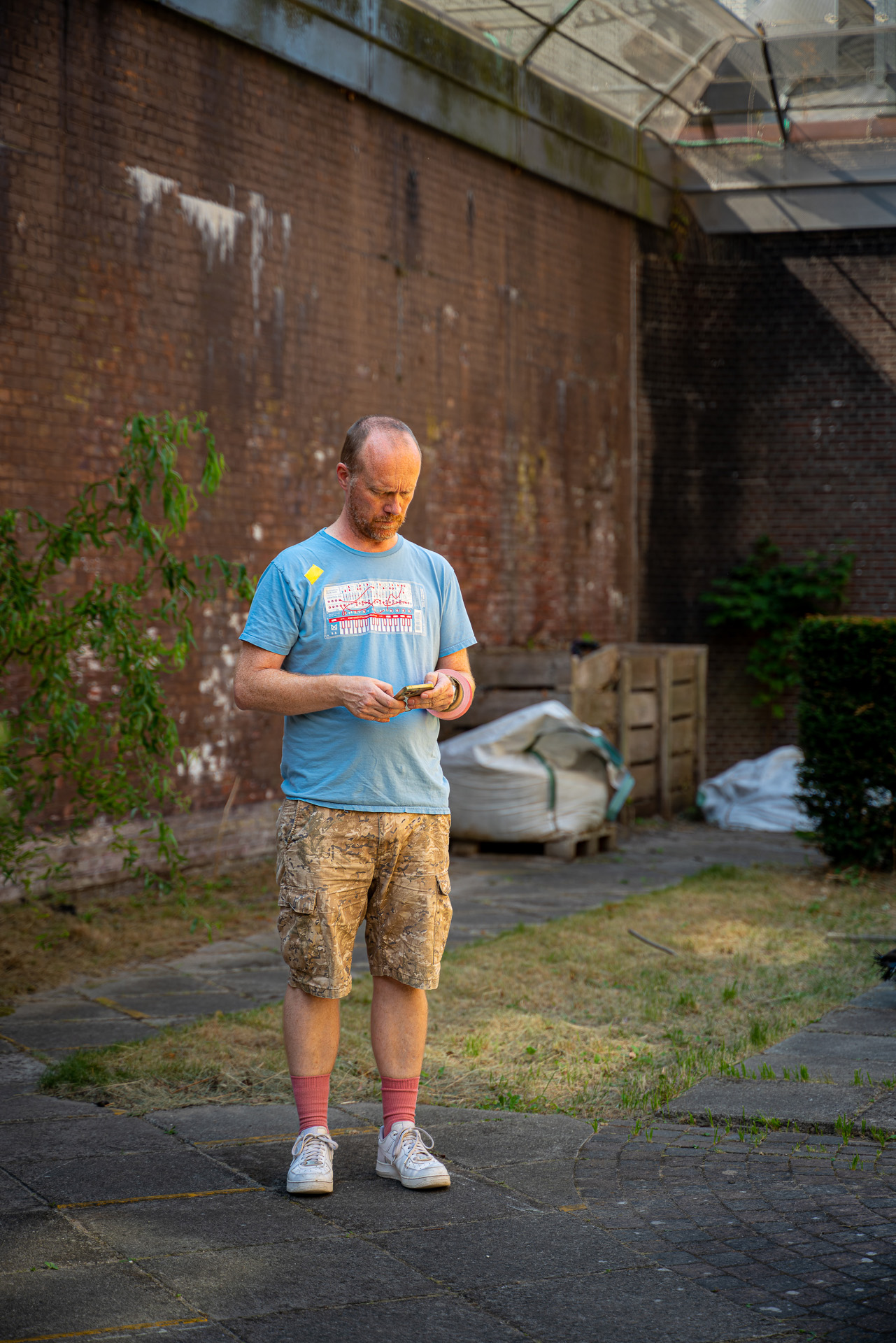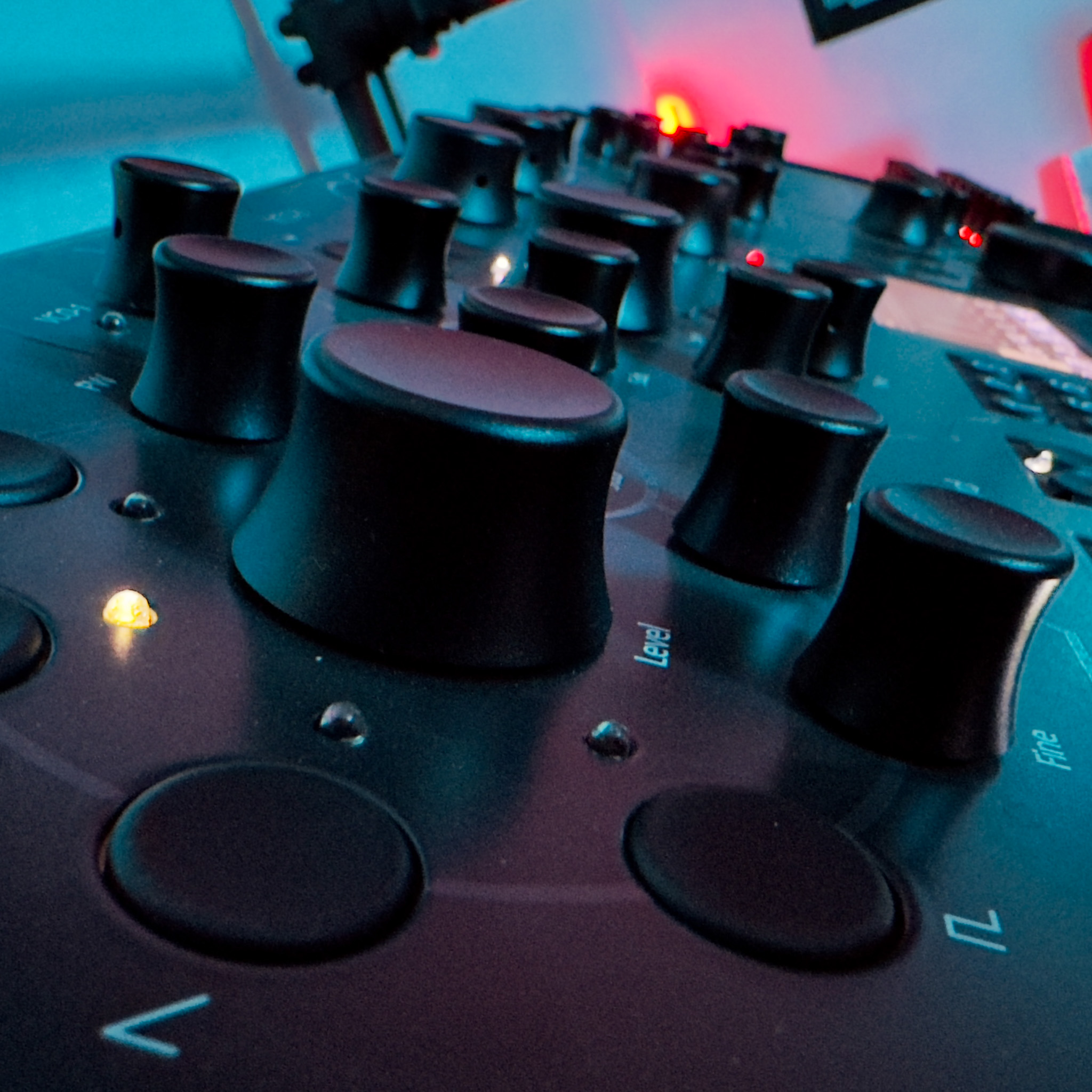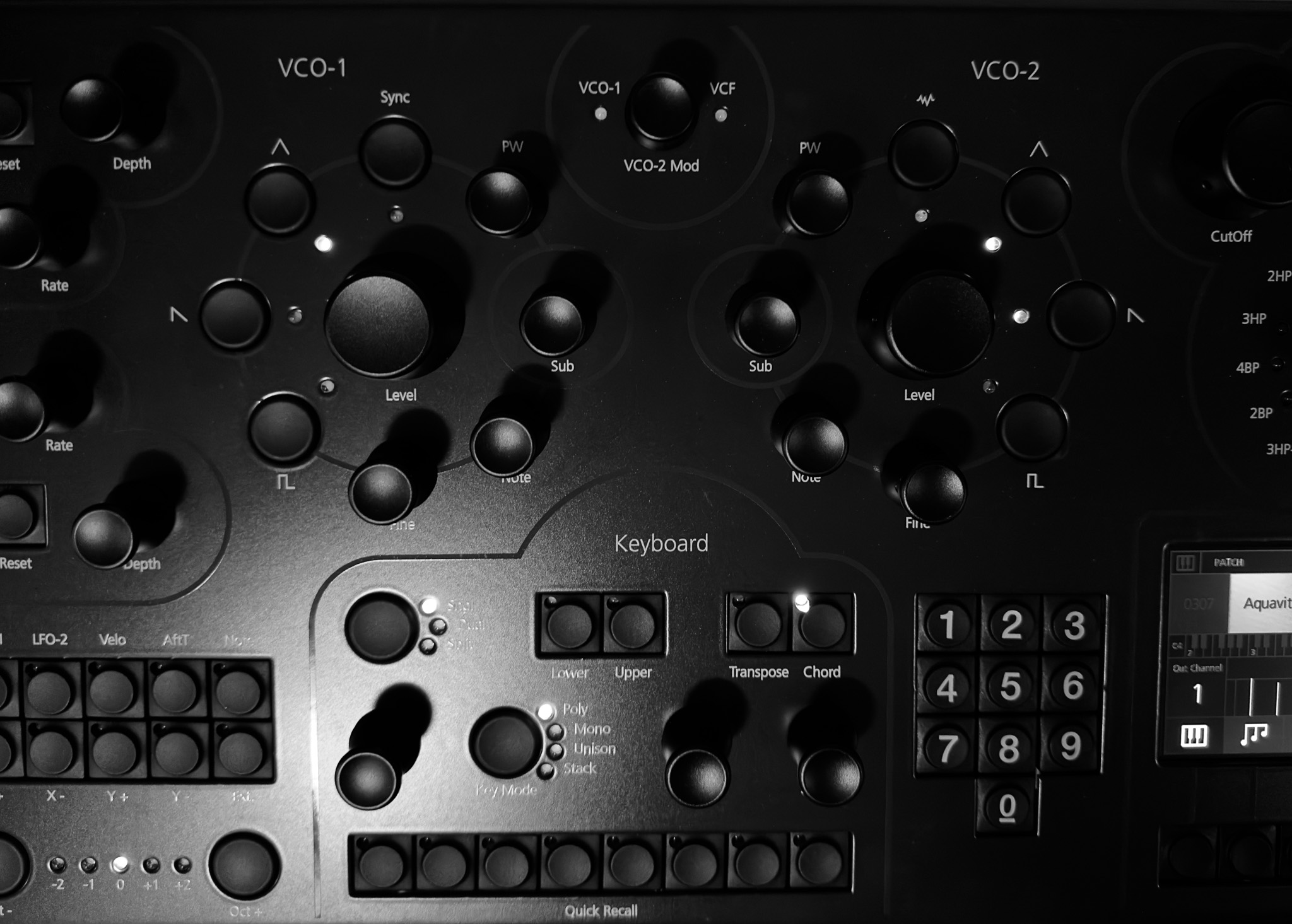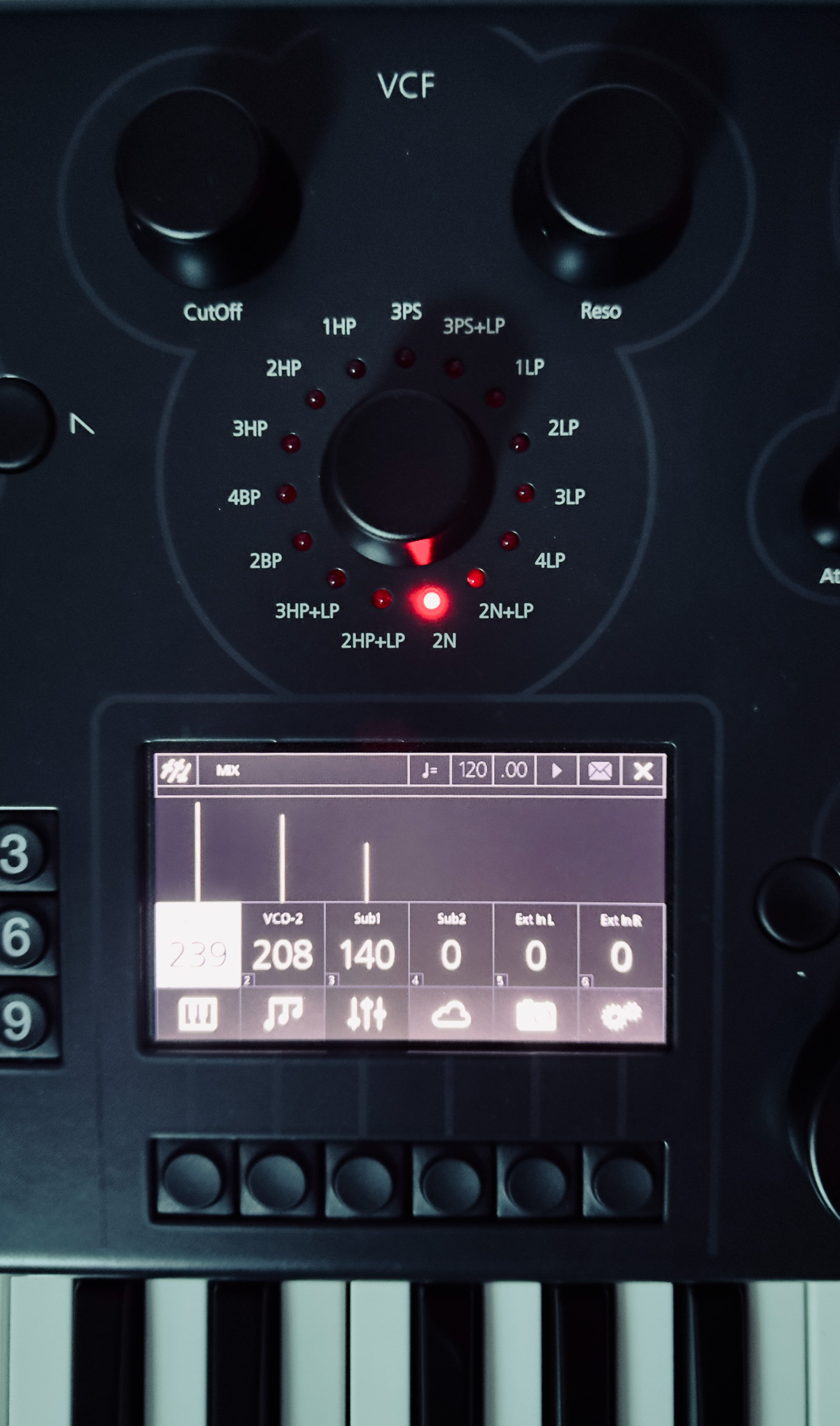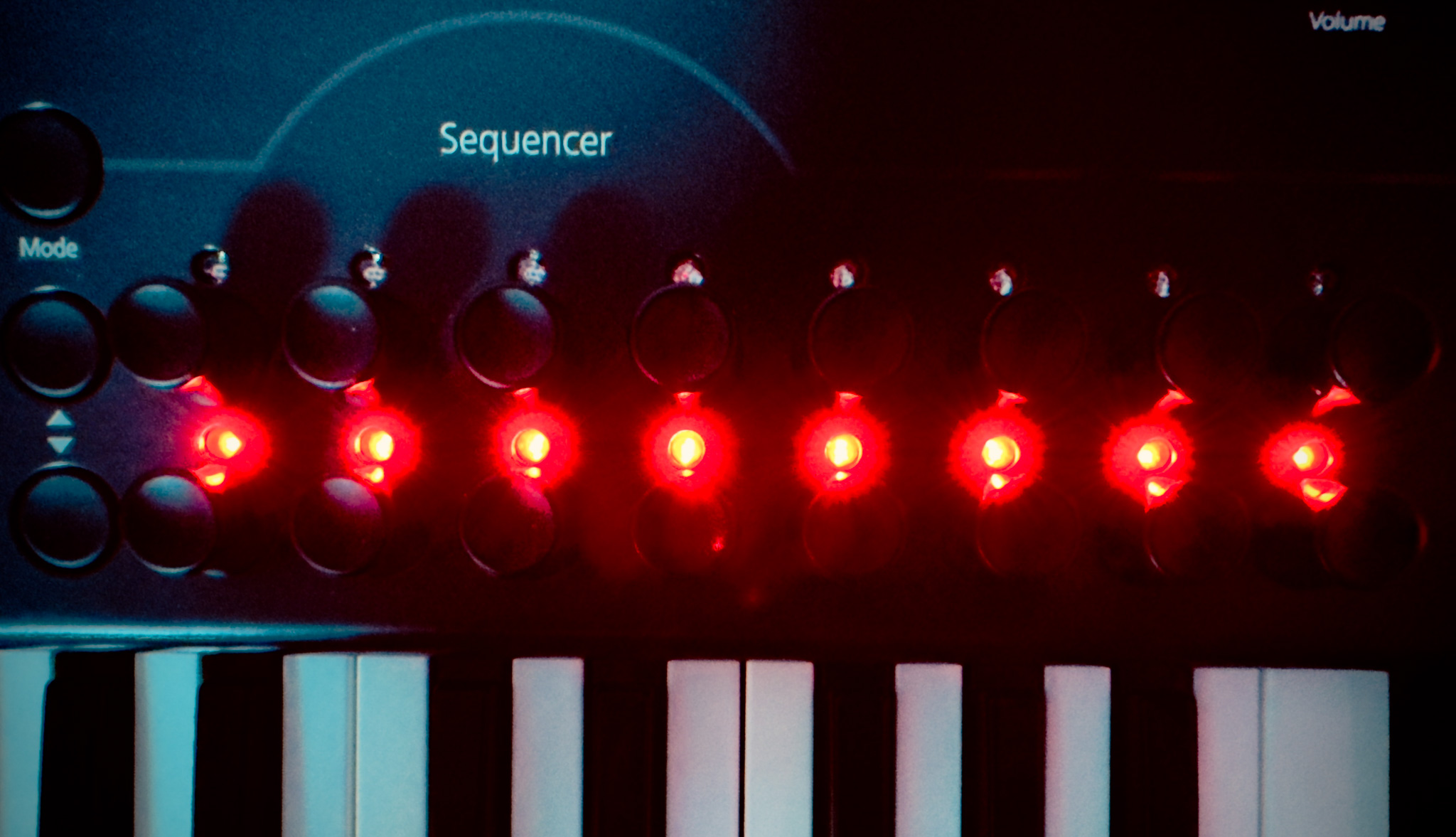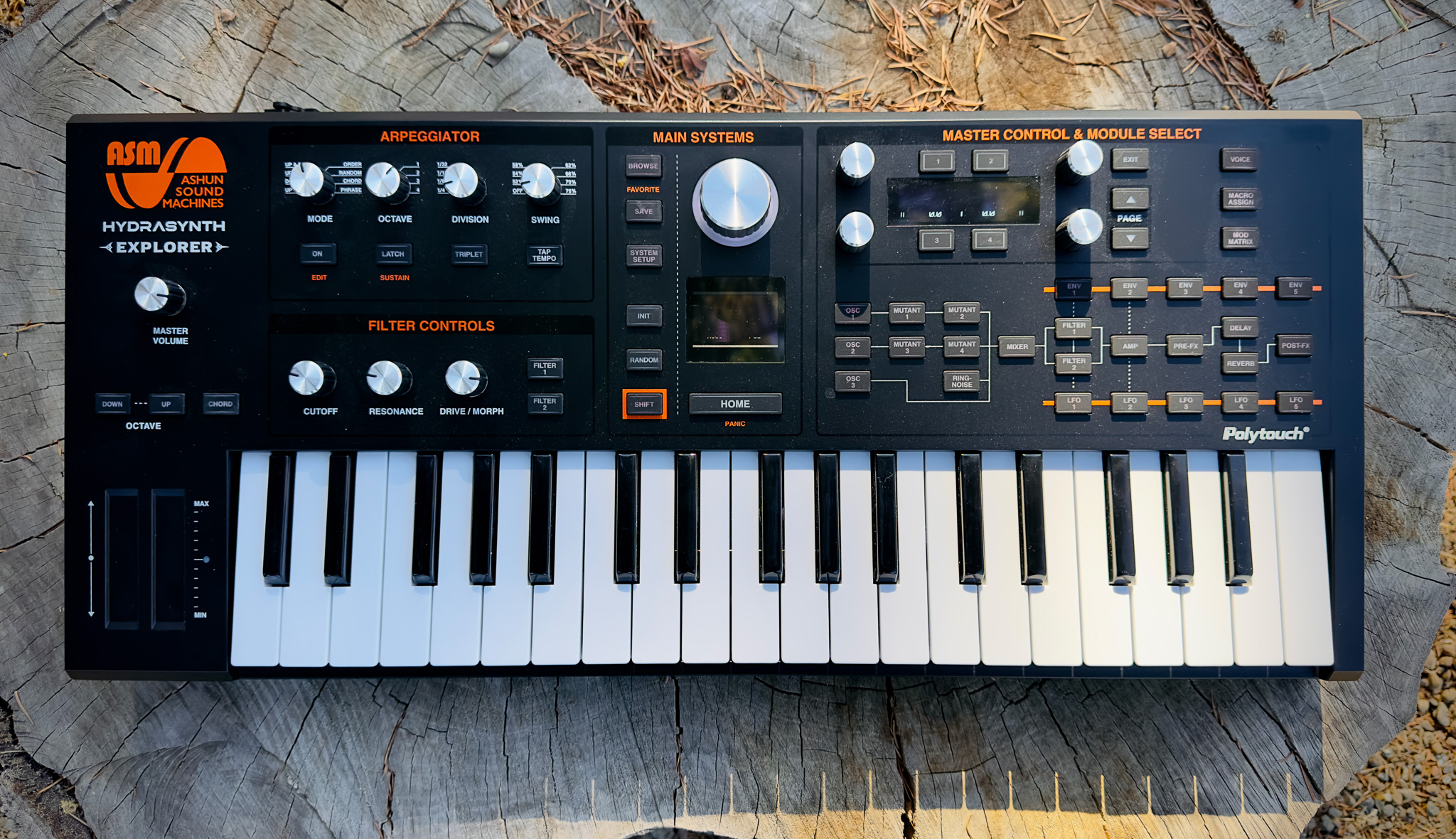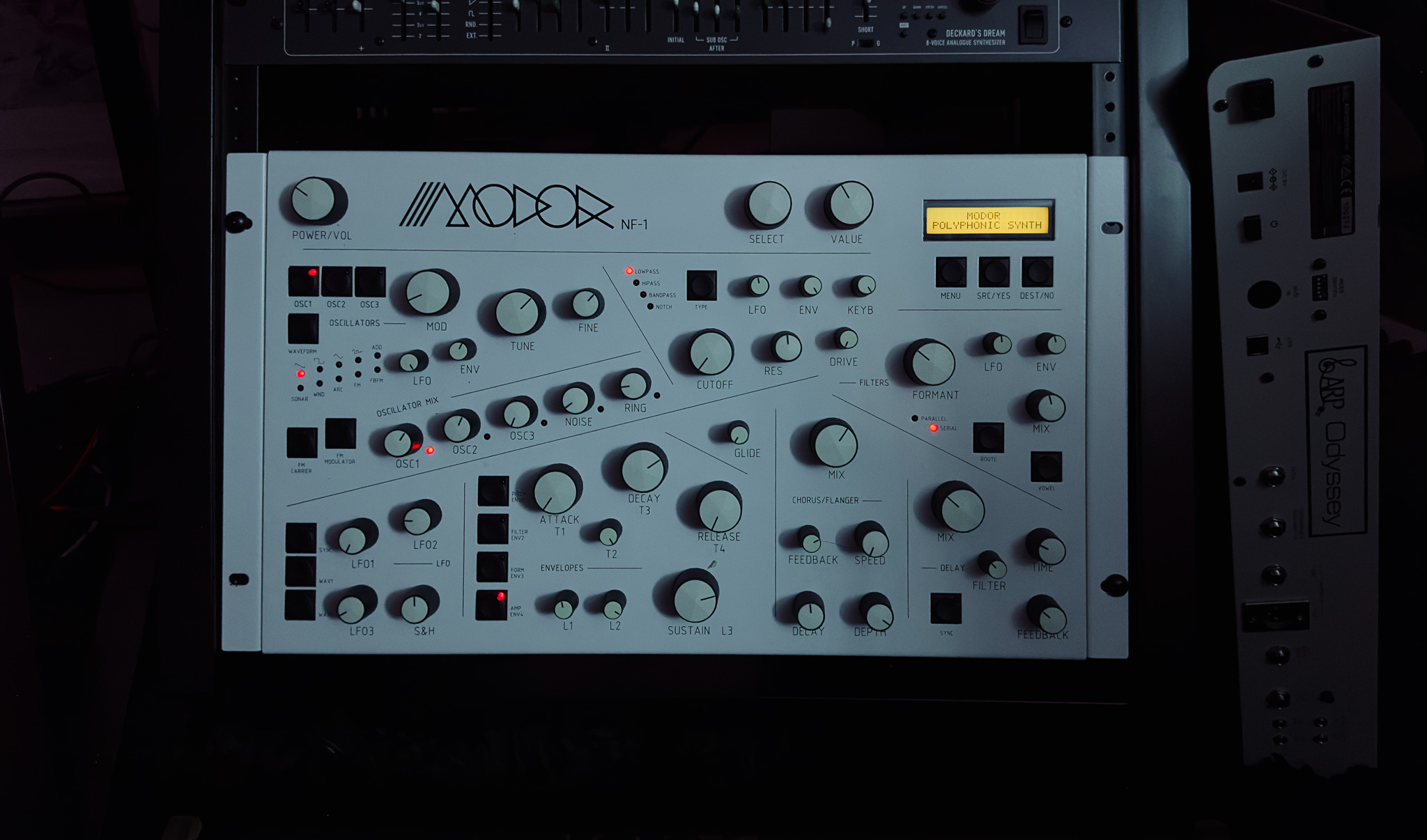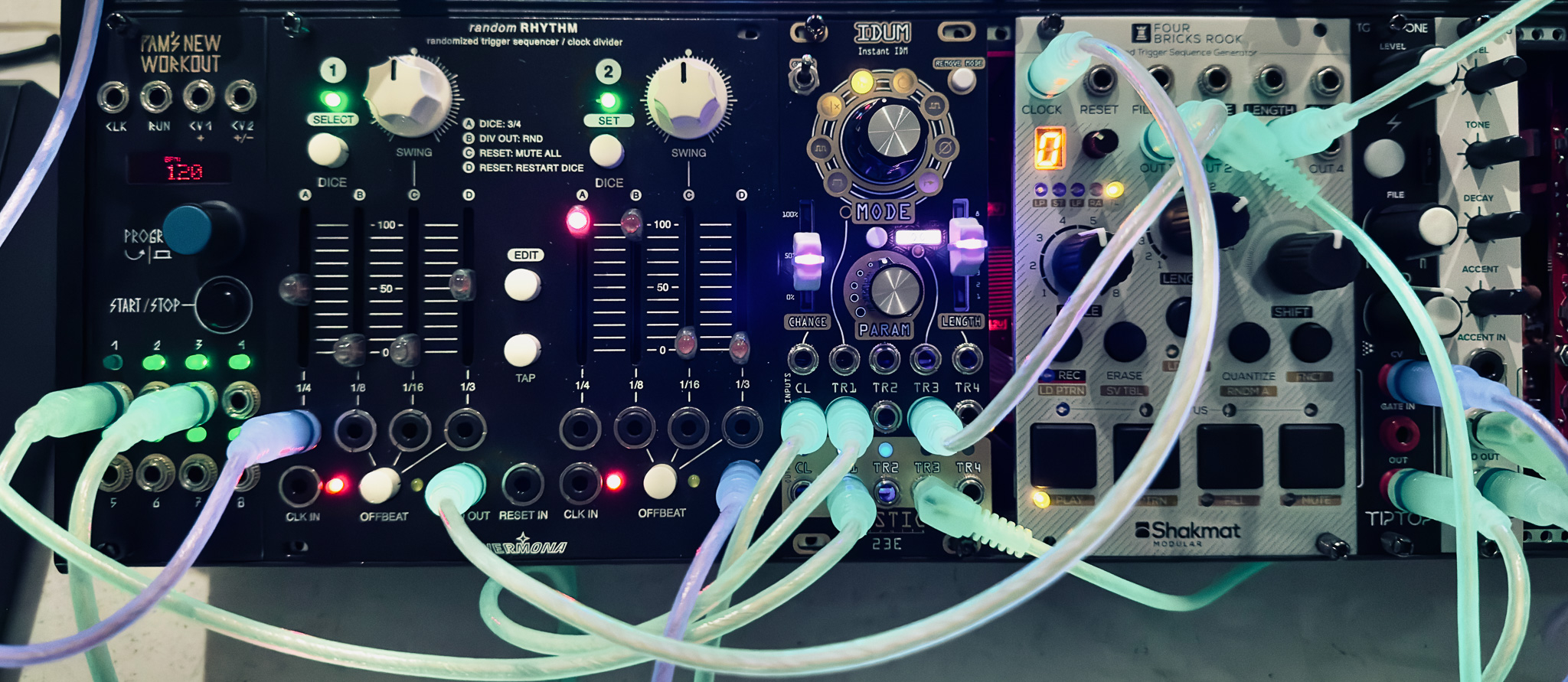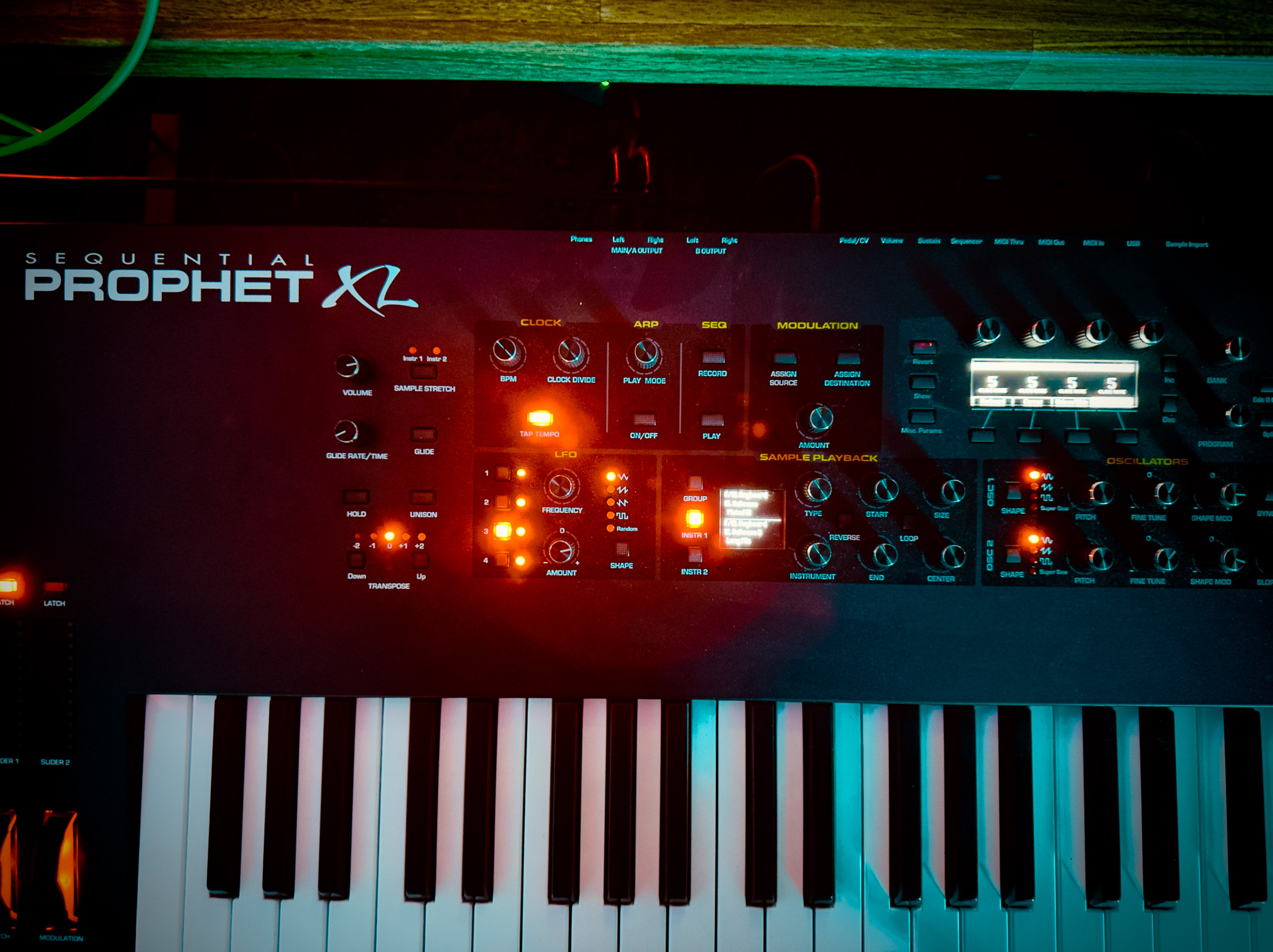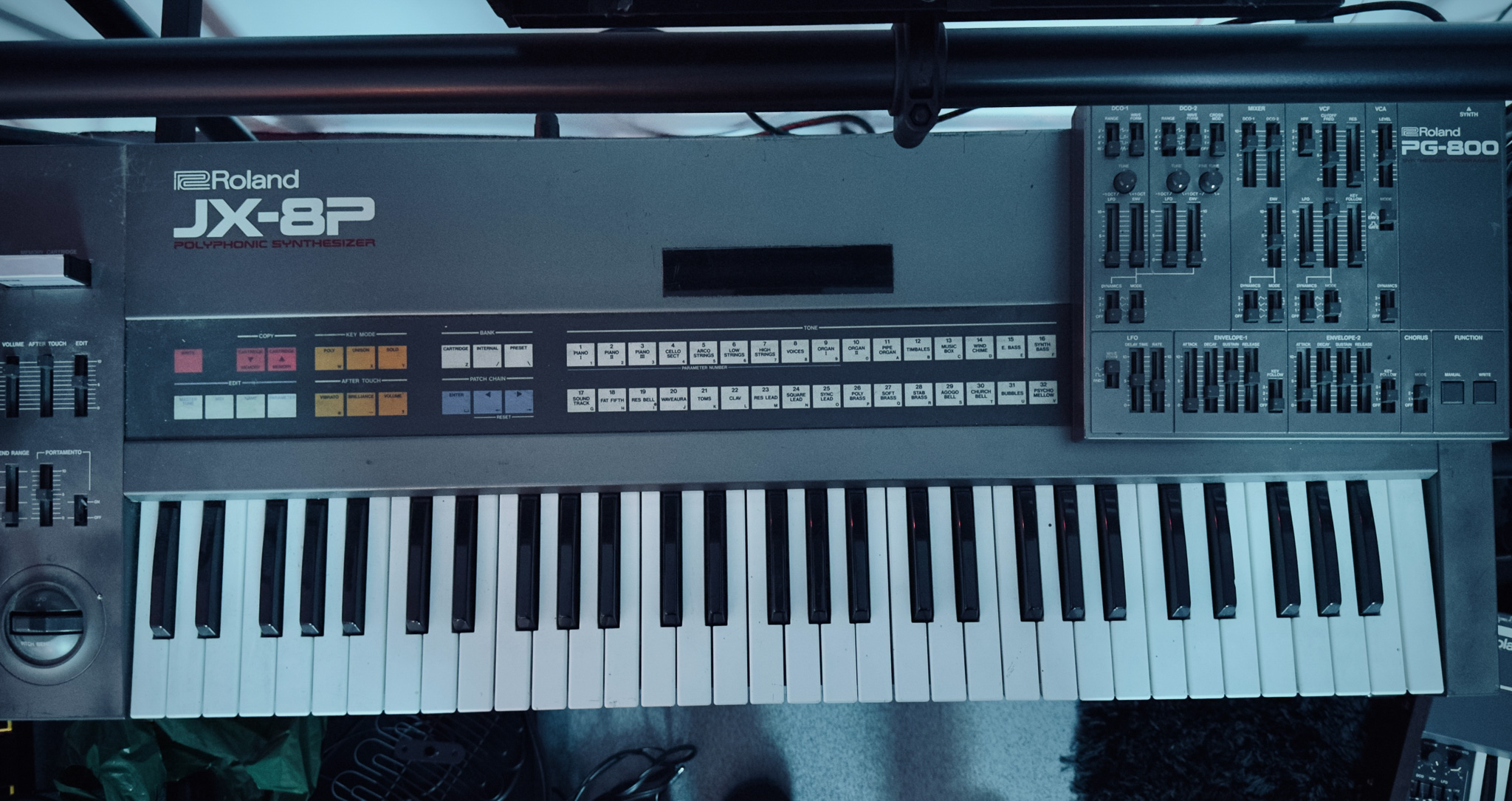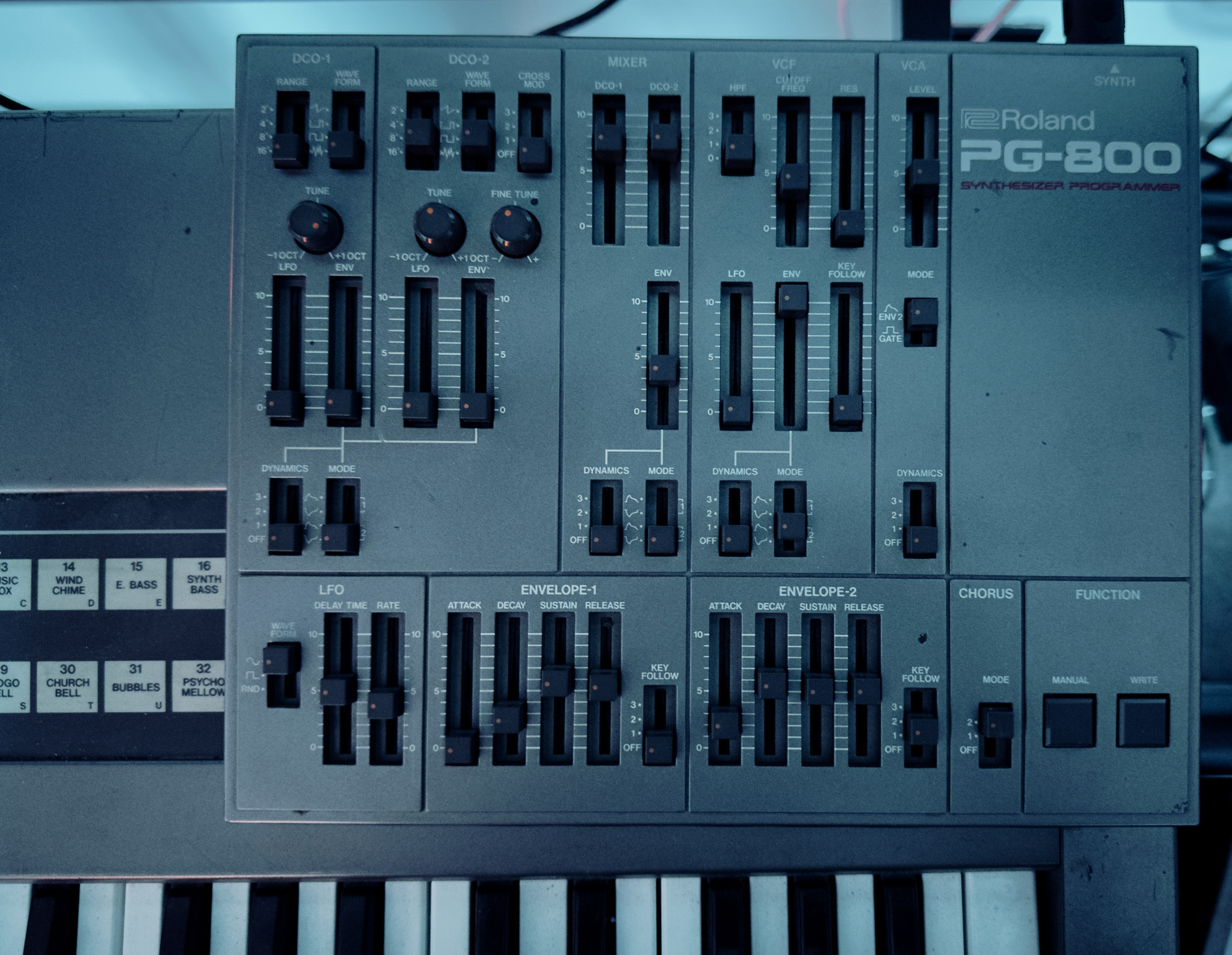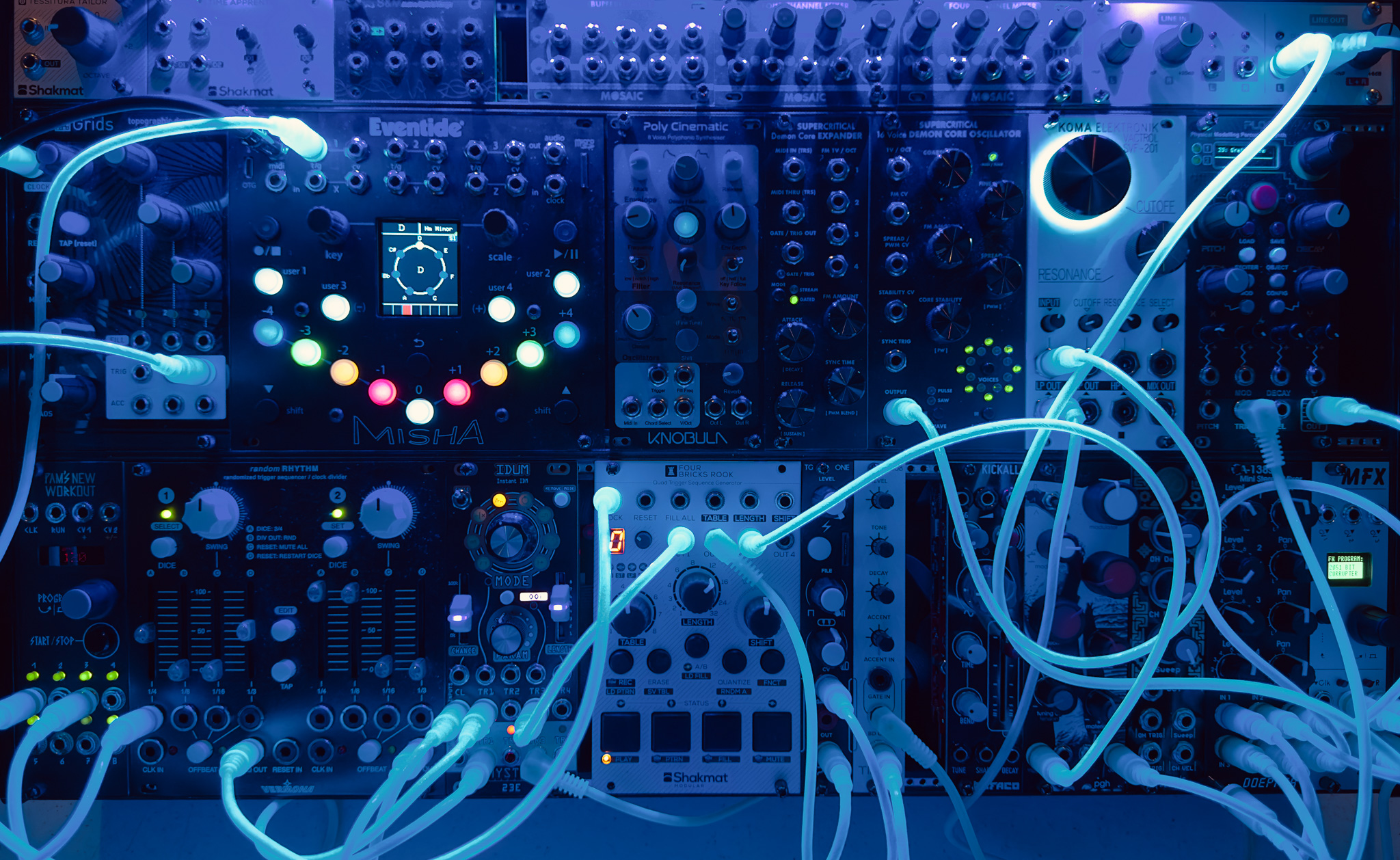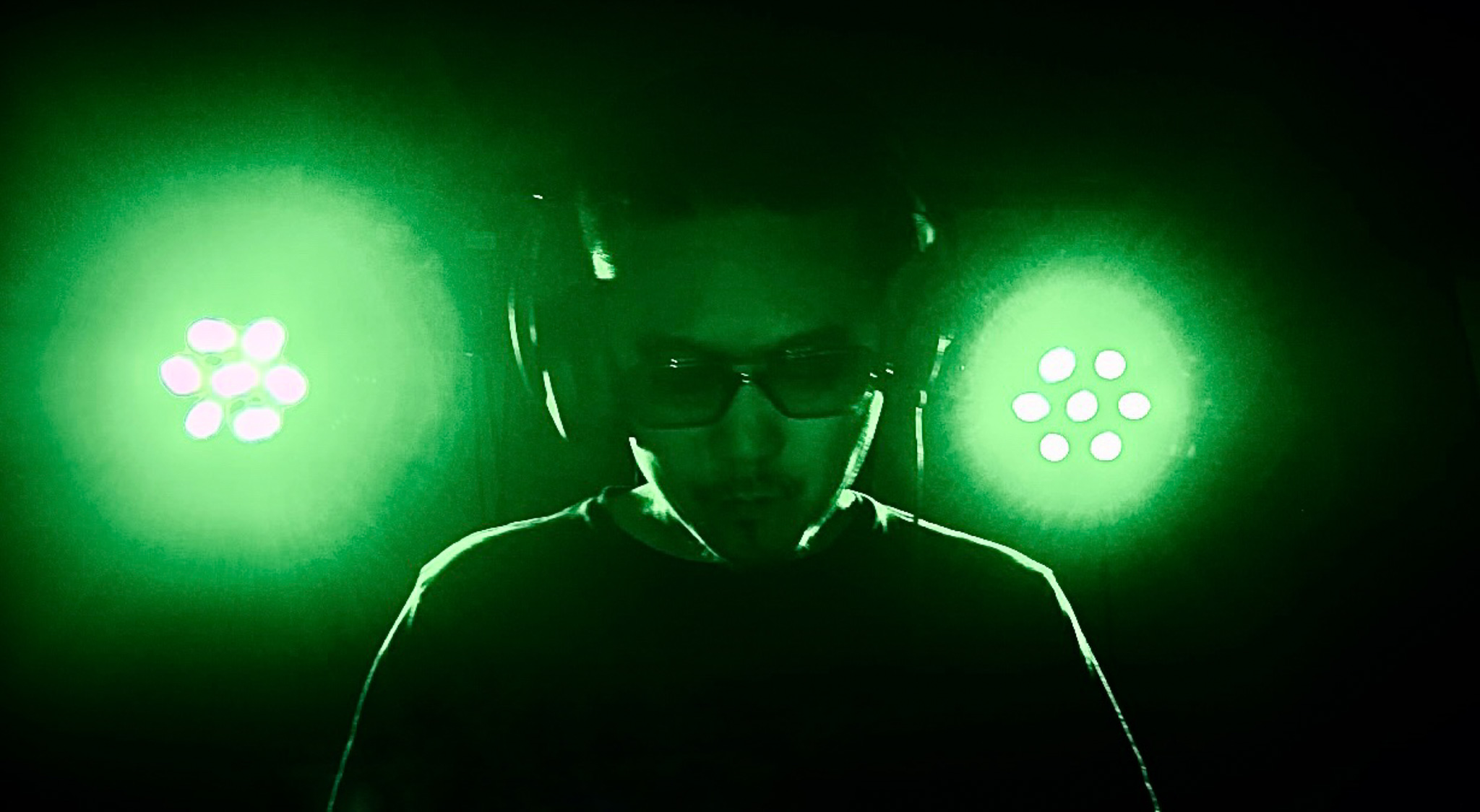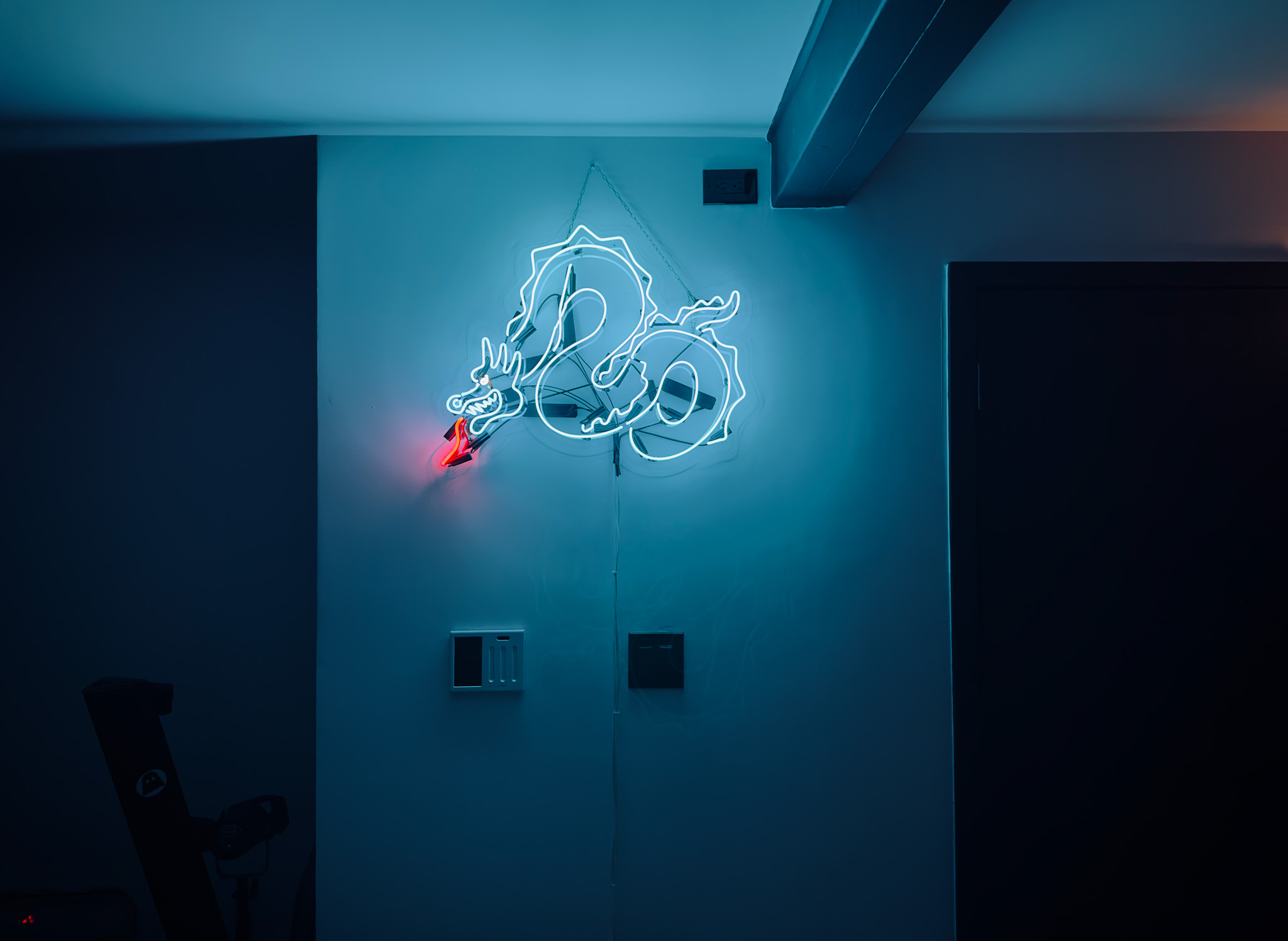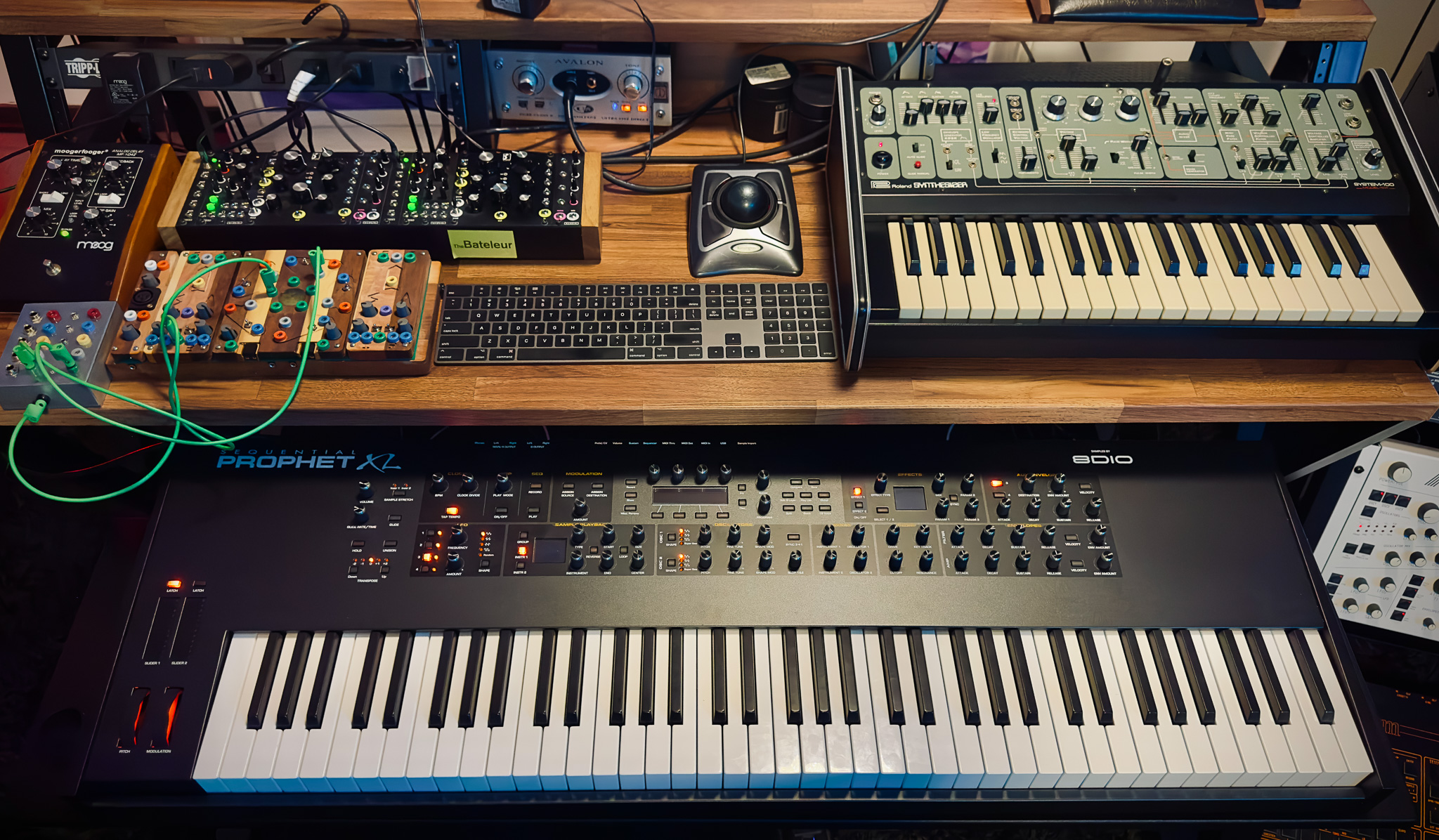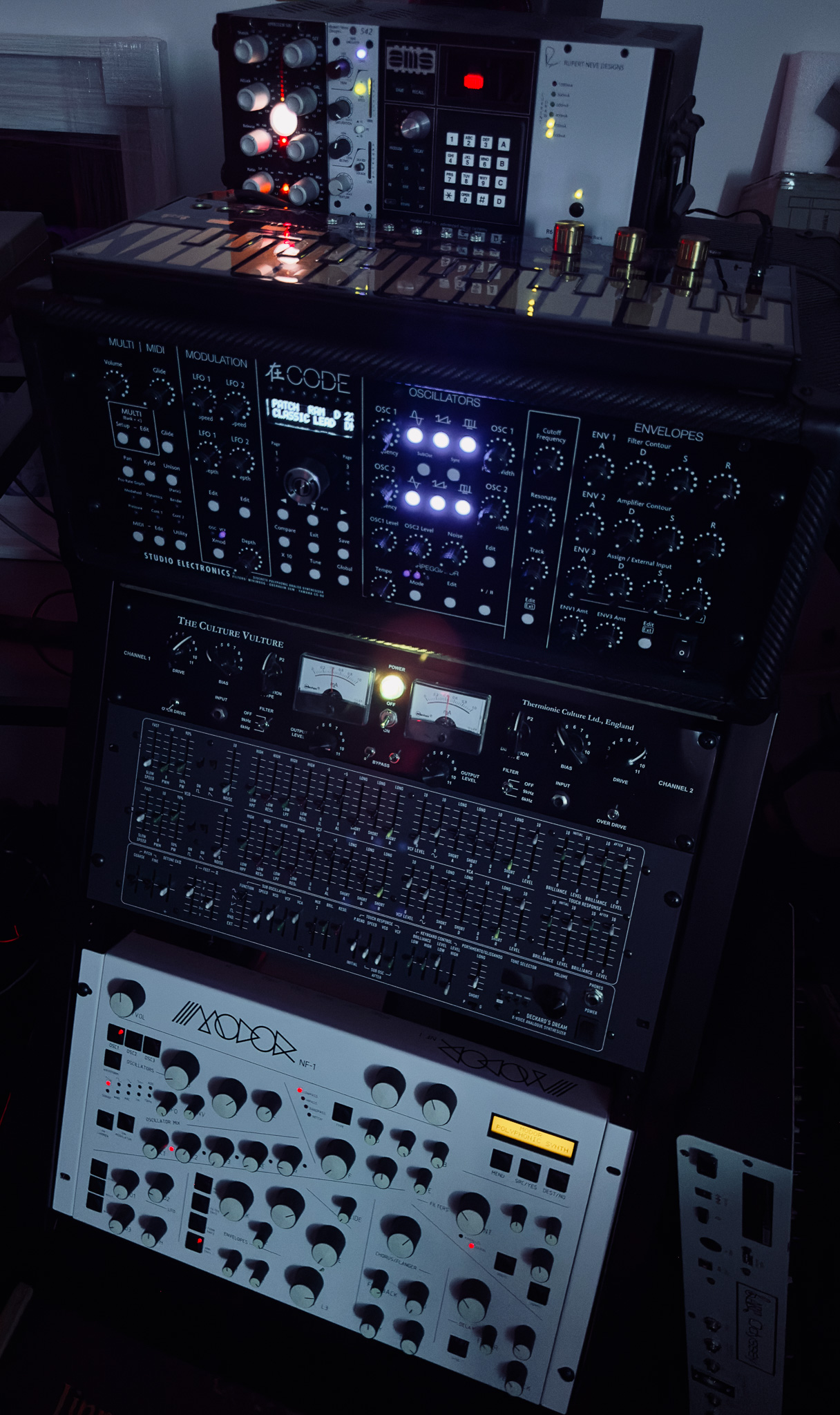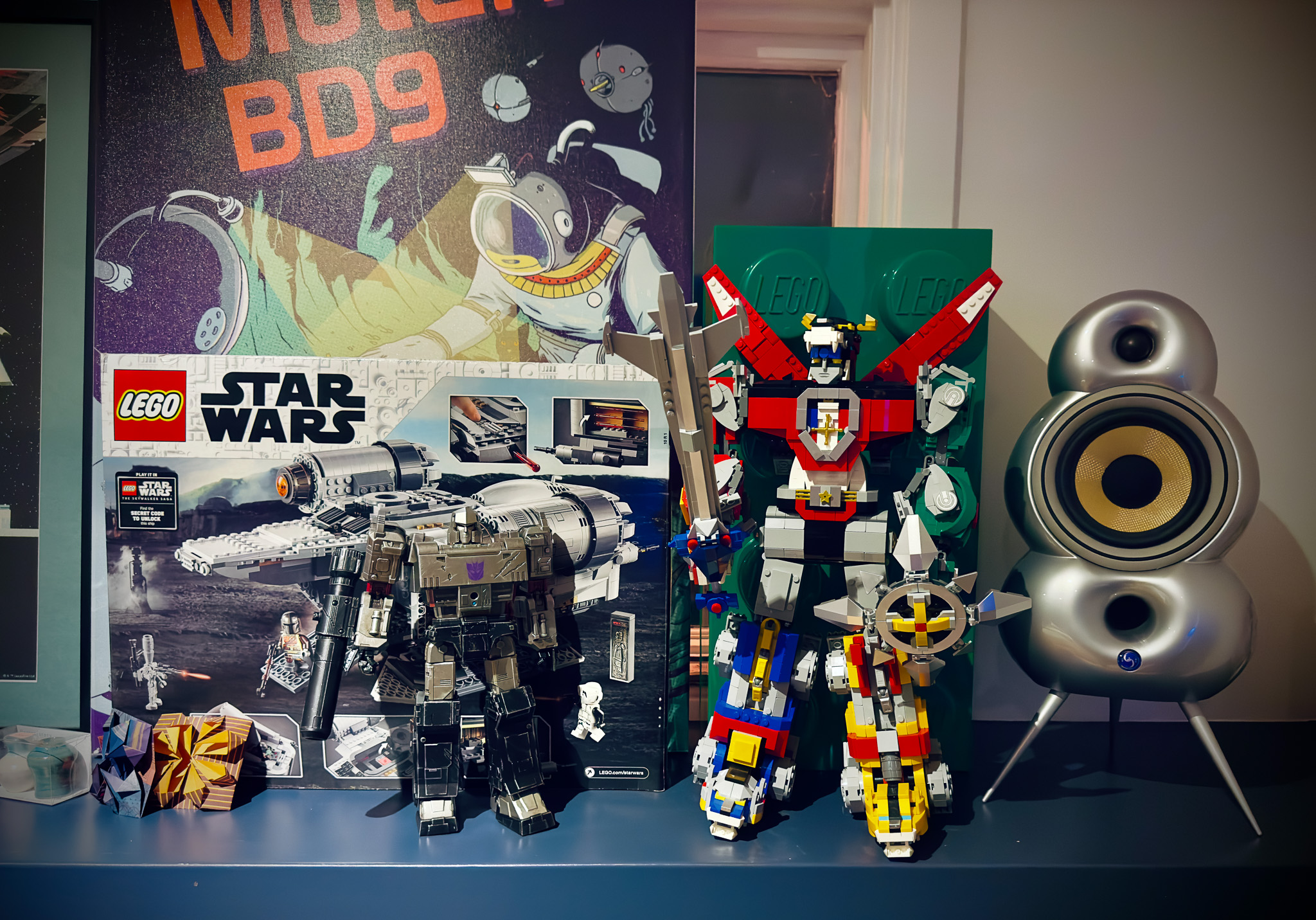1. Favourite knob or fader or switch on a piece of gear and why?
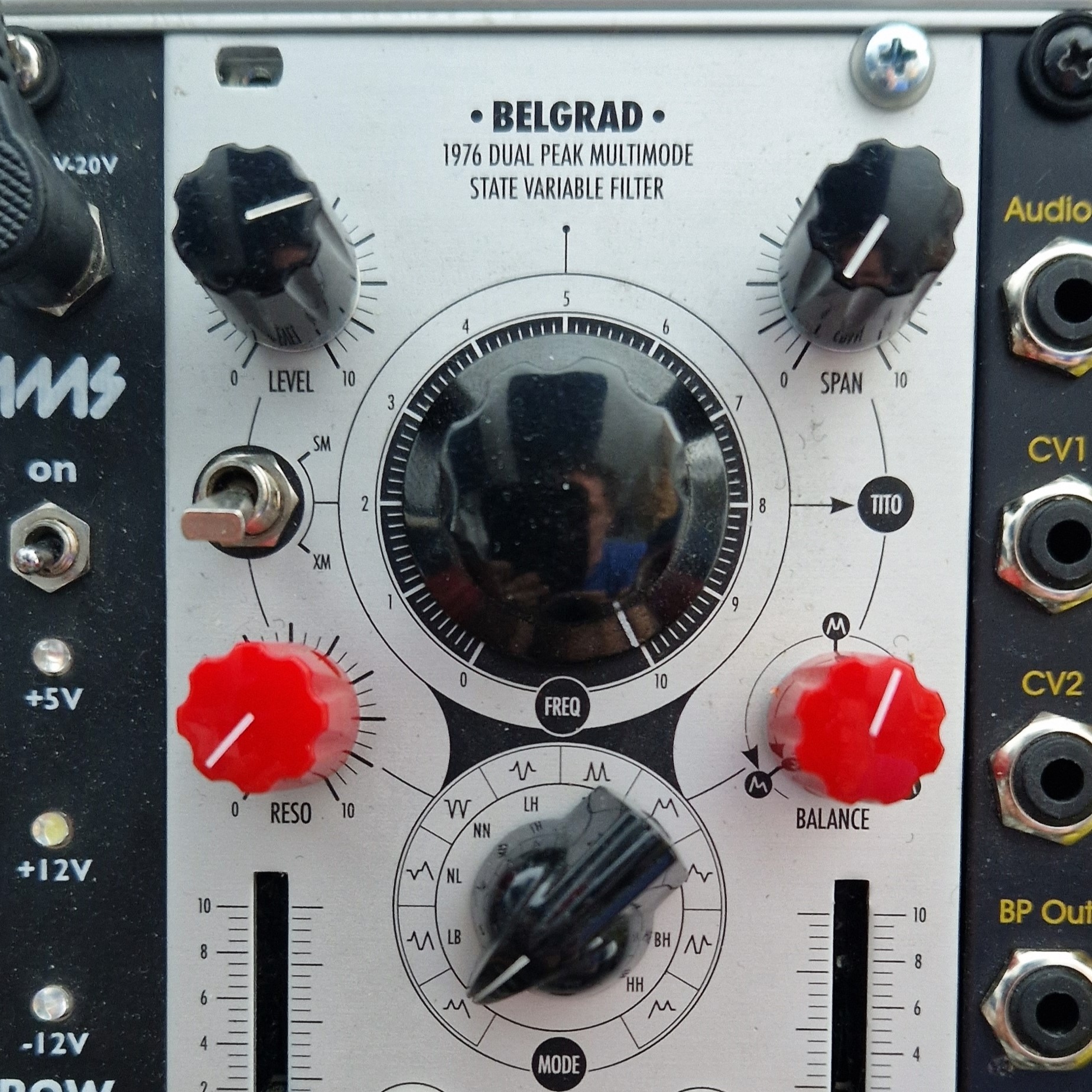
As a proper gear junkie I can’t choose just one, but I can limit my addiction to two knobs 🙂 For the feel – Xaoc Belgrad cutoff frequency. That knob is just the perfection! It’s both solid and fluid, the size is perfect for precise dialing (I can play melodies with just with this filter in high resonance configuration, and I even do this live sometimes). If anyone wants to feel what a knob should feel like, then they need to try this one out!
The second one is feature/playability oriented, it’s Shakmat’s Knight Gallop “pulses” one. I love how easily and musical I can play complex beats and percussions with it just by twisting it. To be honest it’s my secret trick for percussions programming… I don’t program, I just play with Knight’s Gallop and I have been doing this for over two years on all my records that have percussion sounds in it.

2. Do you have an ‘almost’ perfect bit of kit? What would you change?
Not really, I like to craft things from the start (or nearly from start) for every track. I love to experiment, jam for hours on my modular synth and then just edit and cut pieces out of all this improvisation, to start building a track.
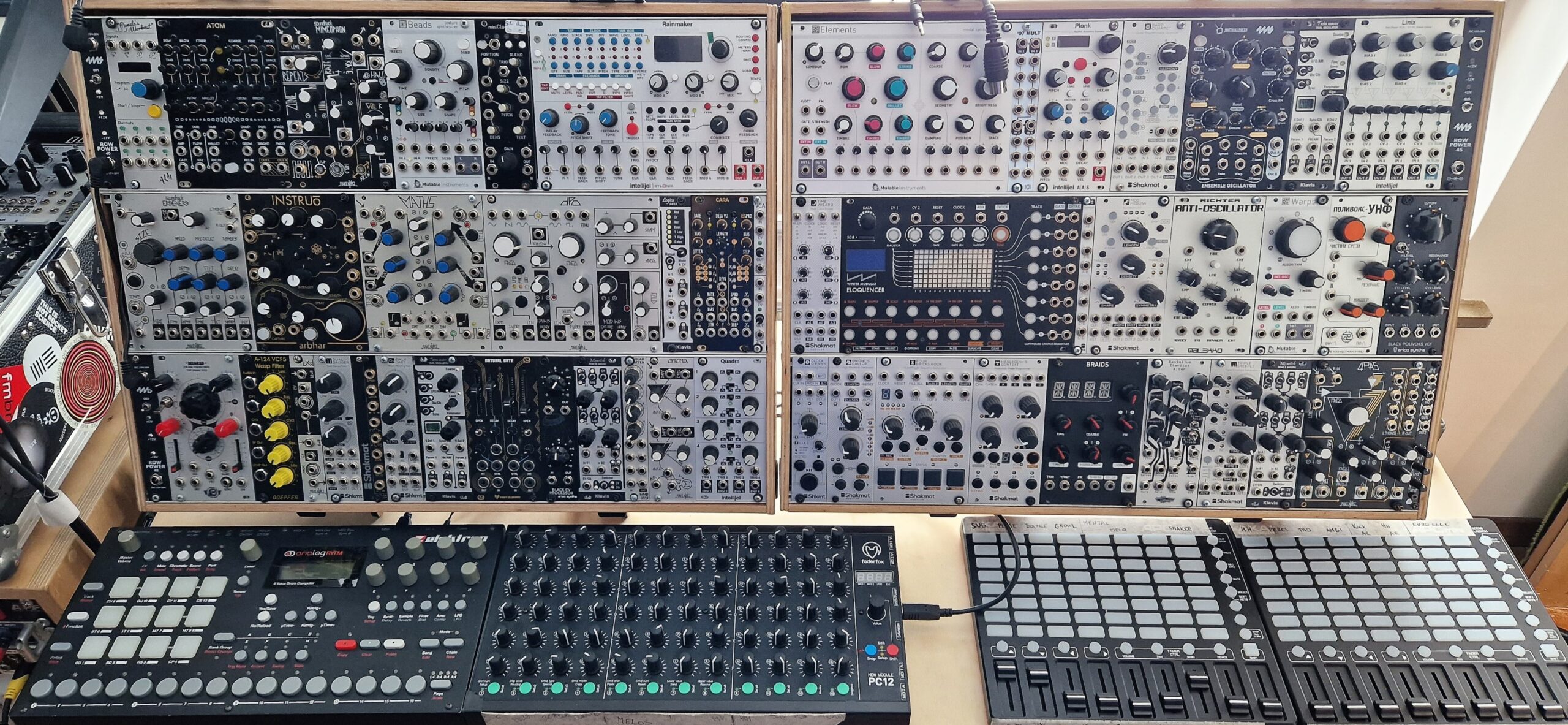
I feel sometimes people are too obsessed by the quest for perfection and forget that it all comes down to context. A “shitty kick’ can sound awesome in the right context. At the end, it’s how it all blends together to create a story.
3. What setup do you bring on holiday or tour or commute etc.?
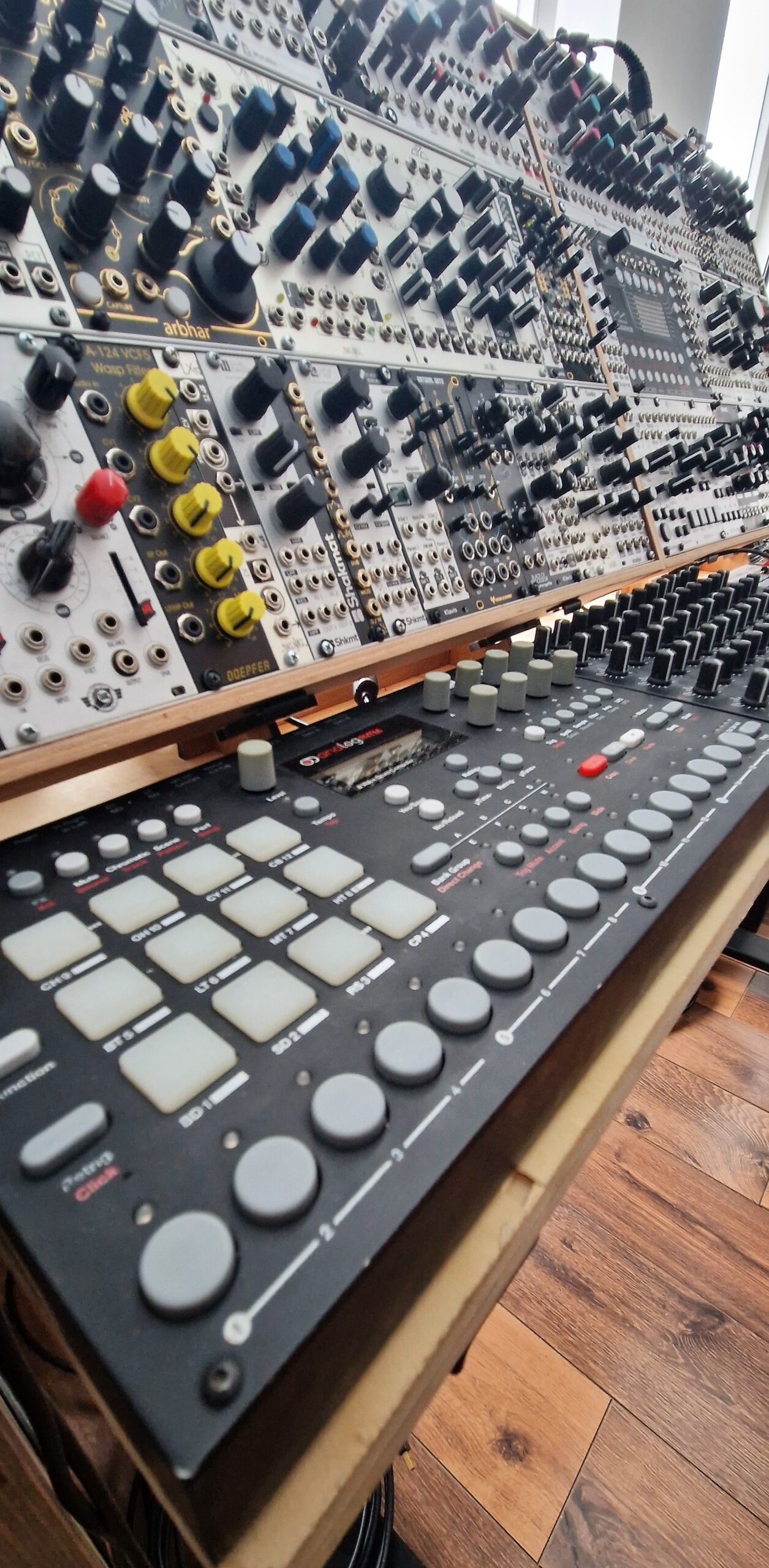
I always have my Elektron Analog Rytm. It’s such a powerful and compact machine, but is also very fun to play with. Next would be my laptop with Ableton Live (I’ve been using that for nearly 20 years now) and RME Fireface UC sound card.
It’s rock solid, drivers and sound are just on point and I use the bigger Fireface800 in the studio, so I’m very confident with this setup and how stable and reproducible it can be between studio and live.
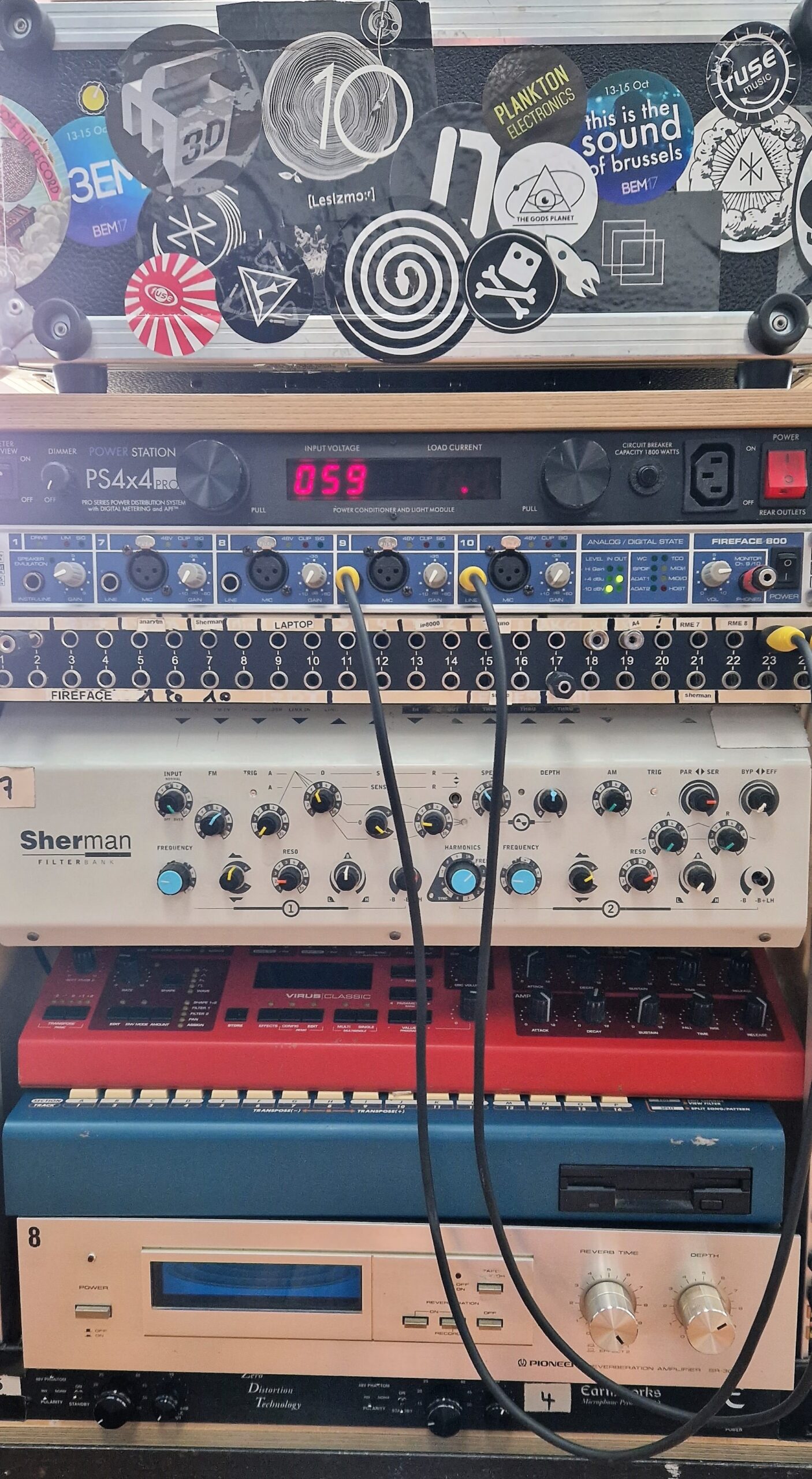
4. What software do you wish was hardware and vice versa?
Tricky question… soft synths wise I love Serum for its flexibility and modulations capabilities and Omnisphere for it’s amazing lush and organic sound, so I’d say these two could be lovely to have in a hardware format, yet, somehow in my workflow I realize that I like the recall features of my soft synths and, for example, I don’t use my beloved Access Virus at all anymore. It has stayed on a shelf now for over 5 years (even if it has midi in/out and I could record all knobs movements as automations).
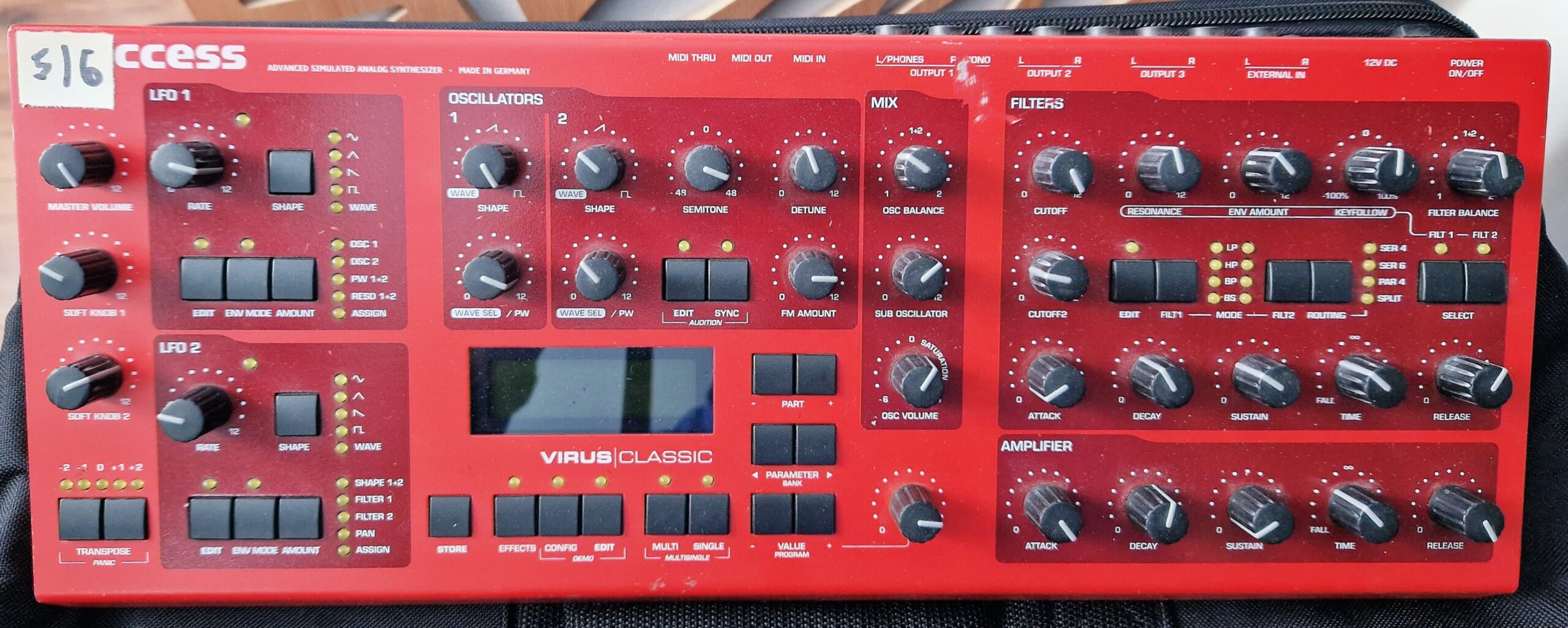
I think it’s a matter of perspective and your approach to these things. I like twisting knobs on my eurorack to create sounds, but then I love to mangle this audio and simply draw automations (by mouse or controller) in the DAW. It’s like fixing things on a canvas and moving forward with what has been done.
Actually I think it’s nice that some things are only accessible in some format, it forces you to make choices on how to use them and in this frame of ideas, limitation is also a tool to move forward. Maybe i should give this whole question a deeper reflection, but I’m pretty happy with how things are :p
5. Is there anything you regret selling… or regret buying? Selling?
Nothing 🙂 I have difficulties to sell things :p Still got my first Yamaha RM1X collecting dust and like i said earlier my Virus as well. Only thing I sold were some modules and no regret at all.
I spend a lot of time before i decide to buy something, i watch many videos online or try it out at friends, so I only got one regret of buying (and regret is a strong word as it was a very cheap thing and I sold it again easily)… that was the Volca Bass.
It doesn’t sound bad, but I didn’t like the ergonomics and it didn’t integrate in my workflow, neither live or in the studio.
6. What gear has inspired you to produce the most music?
My speakers without any doubt. I’m always amazed when I see studio pics with guys owning crazy amounts of expensive gear and only using tiny HS8 or mini 8010 Genelecs. It all comes down to what you hear!
How can you enjoy expensive gear if you don’t hear it properly. I’m deeply convinced that I can make better music with good speakers and a laptop only, than with a crazy wall-of-modular and shitty speakers.
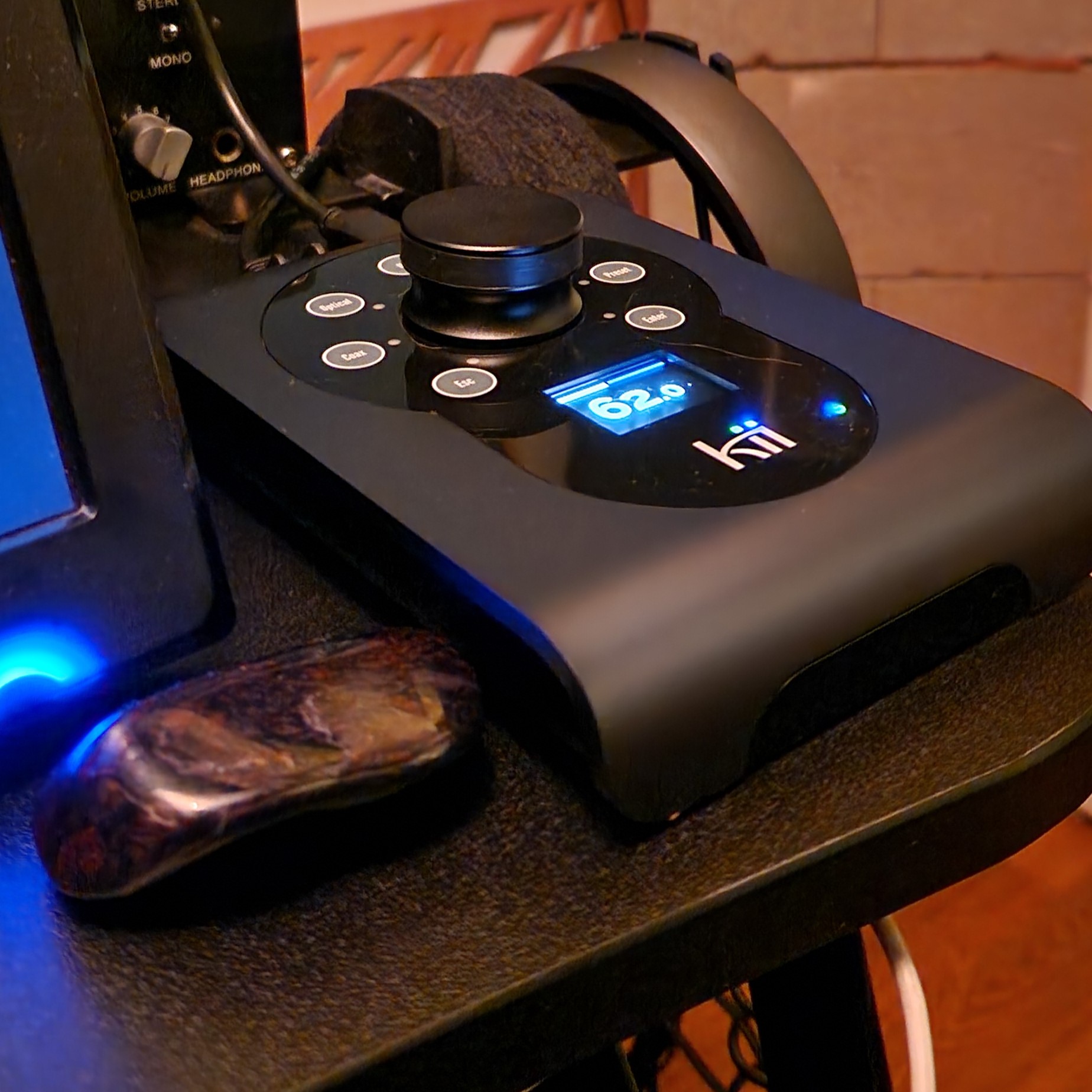
Also quality speakers make you dive into sound, which is so enjoyable, plus the decision making process is way faster, so I’m more efficient and work not only faster but better, which ultimately keeps me in the flow. Actually i have been a very lucky owner of Adam S3XV for over 13 years and just decided to upgrade to Kii Three’s for the exact same reason.
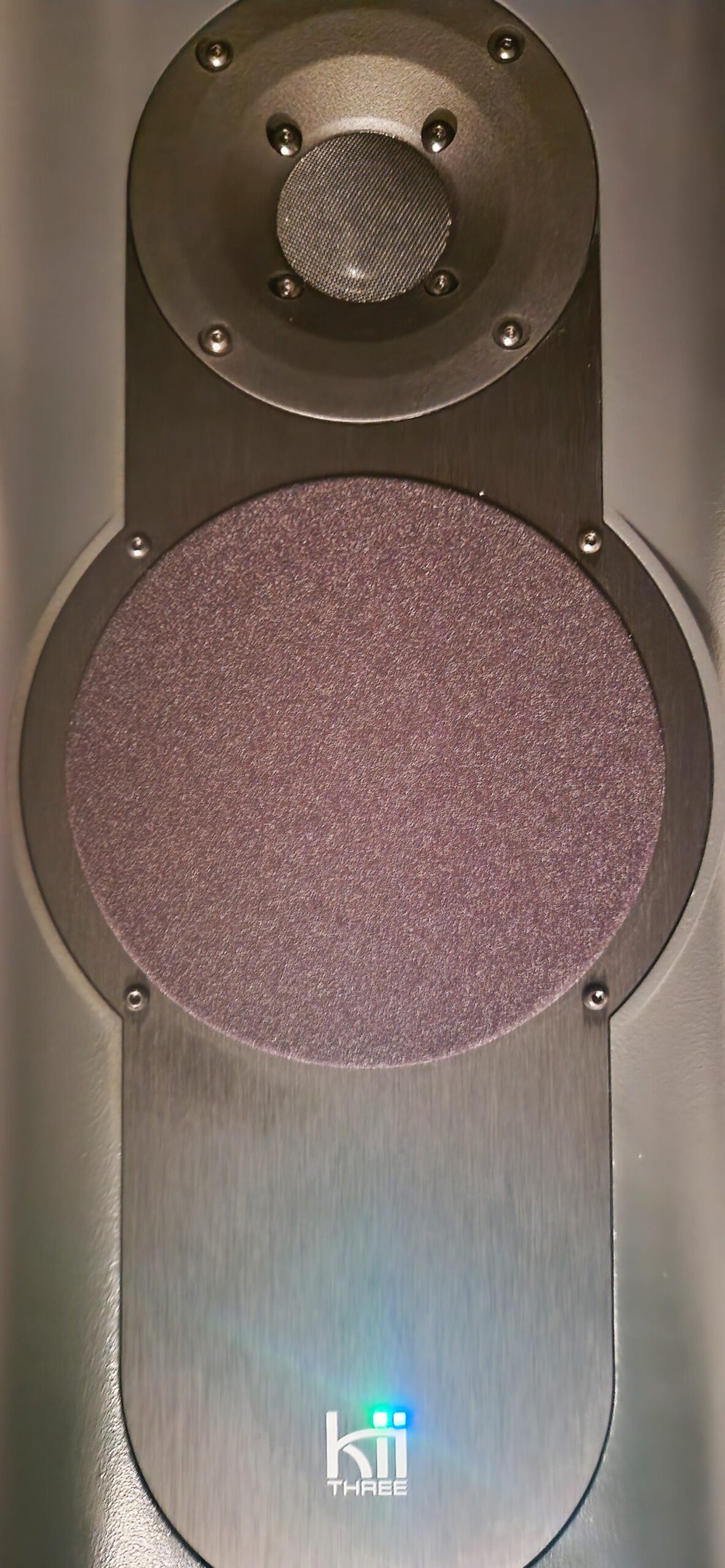
7. If you had to start over, what would you get first?
The speakers and of course some proper room treatment.
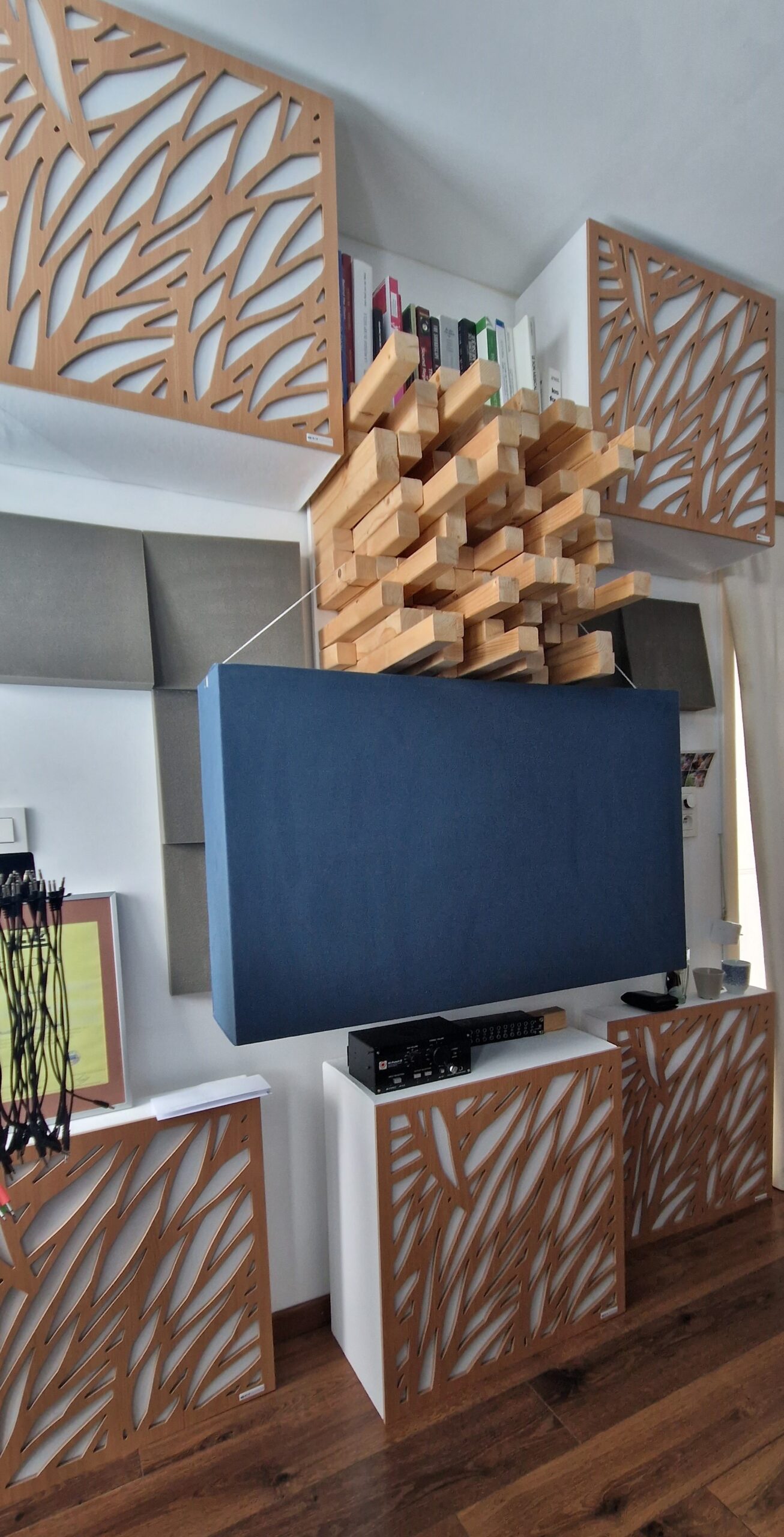
8. What’s the most annoying piece of gear you have, that you just can’t live without?
I don’t have any… A piece of gear simply cannot be annoying or it breaks the flow and this is a no brainer for me. Menu-diving? Hell NO! Or maybe then I’d say the computer. As it’s not an instrument, but it can do everything, but you need to remap, re-adjust things for every track.
I tried some “automap” controllers but i can’t work with these. I’d dream for an ultimate controller for the computer with like nano-bots that build the interface every time you create a new channel or load a new plugin so everything is always ready at a twist of the fingers… maybe technology will be there in a few years from now… but then this thing would become a huuuge console and would create all kinds of other problems in terms of ergonomics and horrible early-reflections from the ‘desk’.
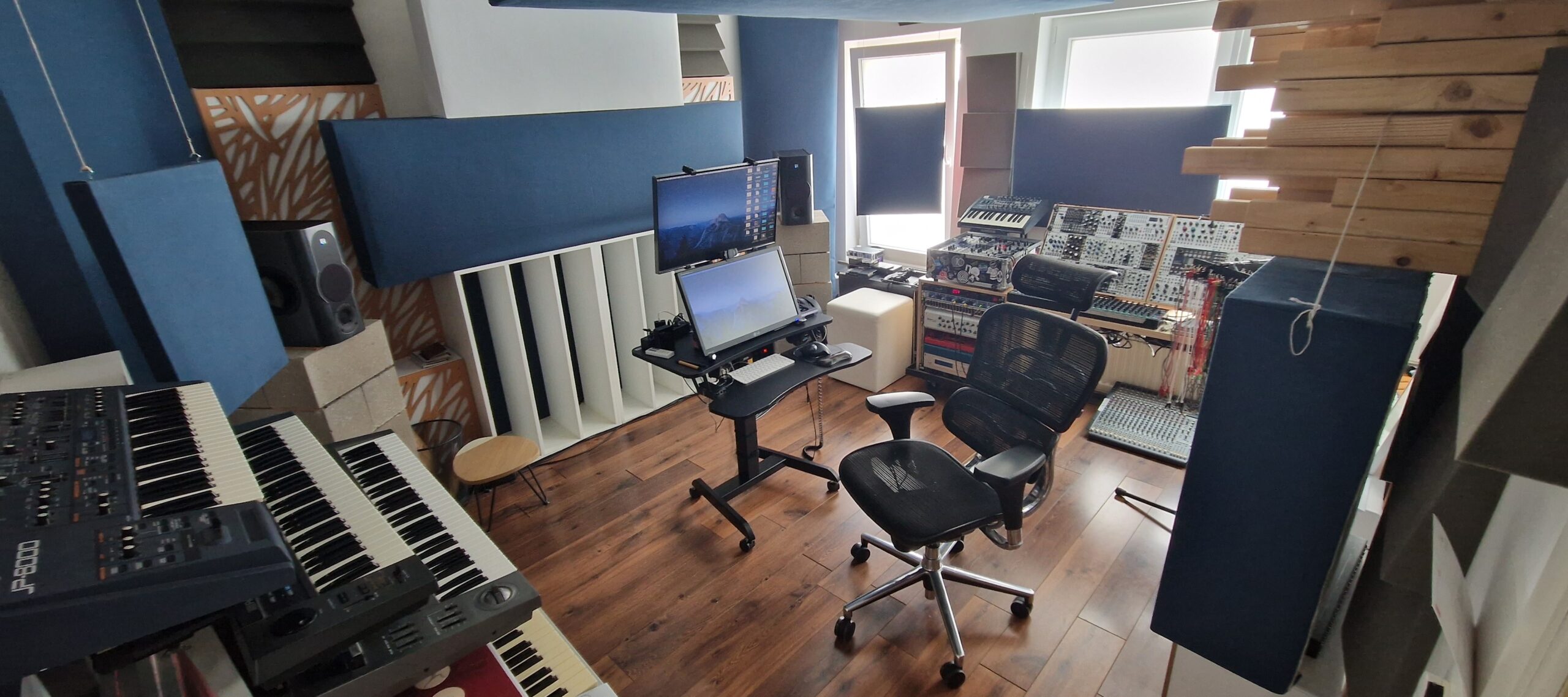
As I’m a bit of an acoustic freak this won’t work either. Also having space around me and a feeling of “air” or freedom becomes more and more important. When you spend over 8 hours a day in the same room, then when there are too many things much to close to you, it becomes claustrophobic somehow.
9. Most surprising tip or trick or technique that you’ve discovered about a bit of kit?
Resampling in Ableton. I love it. Just create a new audio track and record onto it everything that goes trough your master bus. It’s the best trick to create new textures that are evolutions or answers to previous ones. Sometimes I just solo some effects on some return busses and record those, pitch them down, stretch them, warp them, slice them and then feed them back into the same (or others) effects chains. I like to approach sound like clay and really get to sculpt it.
Also fixing things while bouncing audio is again a way to move forward. If at some point you wished you didn’t do it and wanted to go backwards then you have to become creative with new solutions and this is also something I love, as it pushes you out of your comfort zone and often results in a more creative outcome, than if I could just change a note on a midi clip or reopen the filter on a synth for example.
Artist or Band name?
Pattrn
Genre?
Deep Techno, Dub Techno, Ambient and Acousmatic music
Selfie?
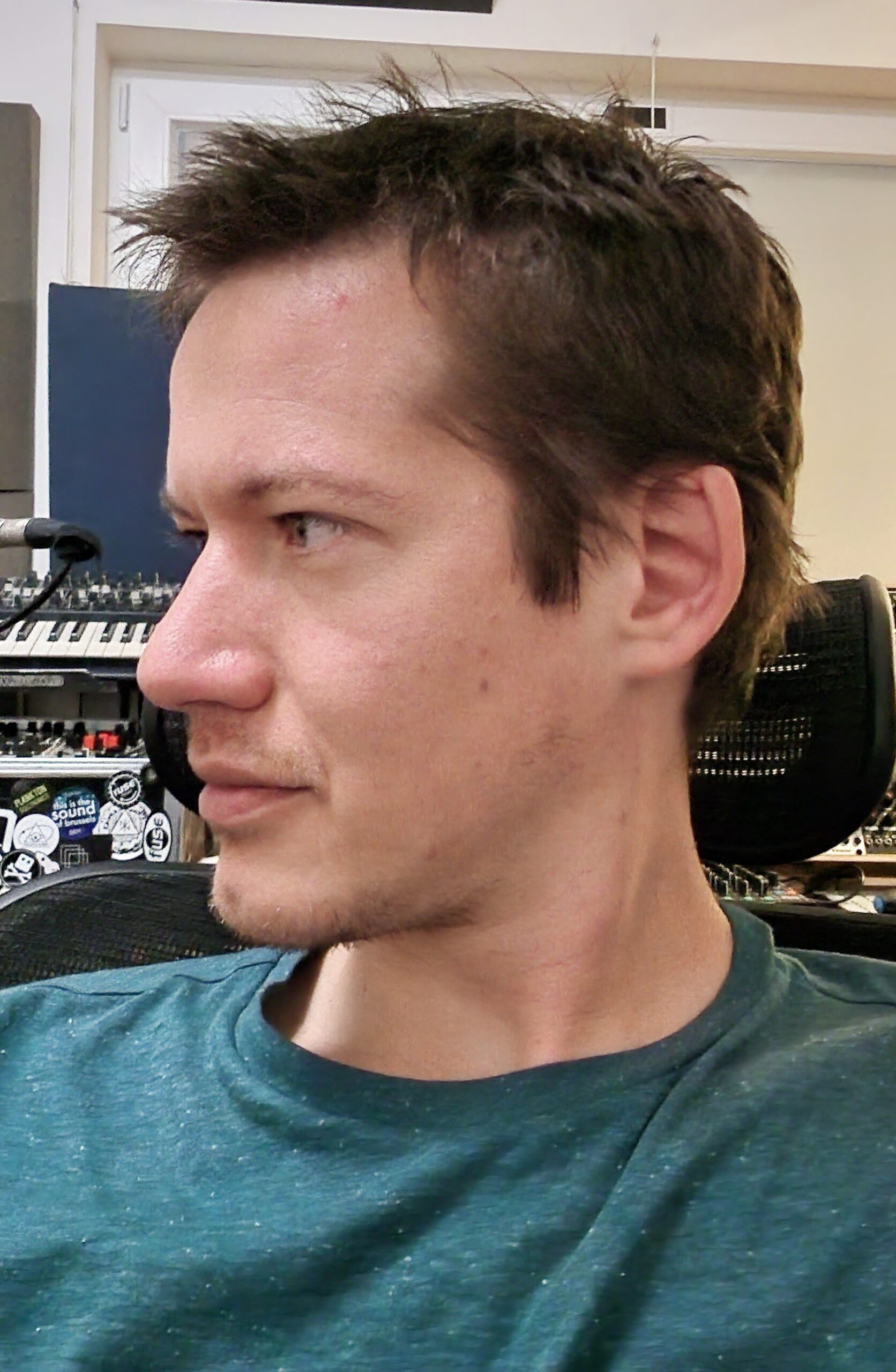
Where are you from?
Brussels
How did you get into music?
Started learning the violin when I was almost 4, then discovered electronic music with cassettes that my big brother made me and ultimately started playing with Fruity Loops before diving into Ableton.
What still drives you to make music?
That indescribable feeling of just loving doing it, falling into a vortex and not seeing the time fly. And later to share it with people, spread love and joy while playing and giving the opportunity to people to escape their struggles, their pains for a little time… or simply get out of their day-to-day life.
How do you most often start a new track?
I really don’t have a routine, it can be a loop from some previous modular recording, a preset on a synth, an idea or theme I want to depict, … for me routine is killing the fun and the creativity. Some tracks have been made fully into Ableton with only VST’s, some others are nearly fully made from jamming on my modular synth.
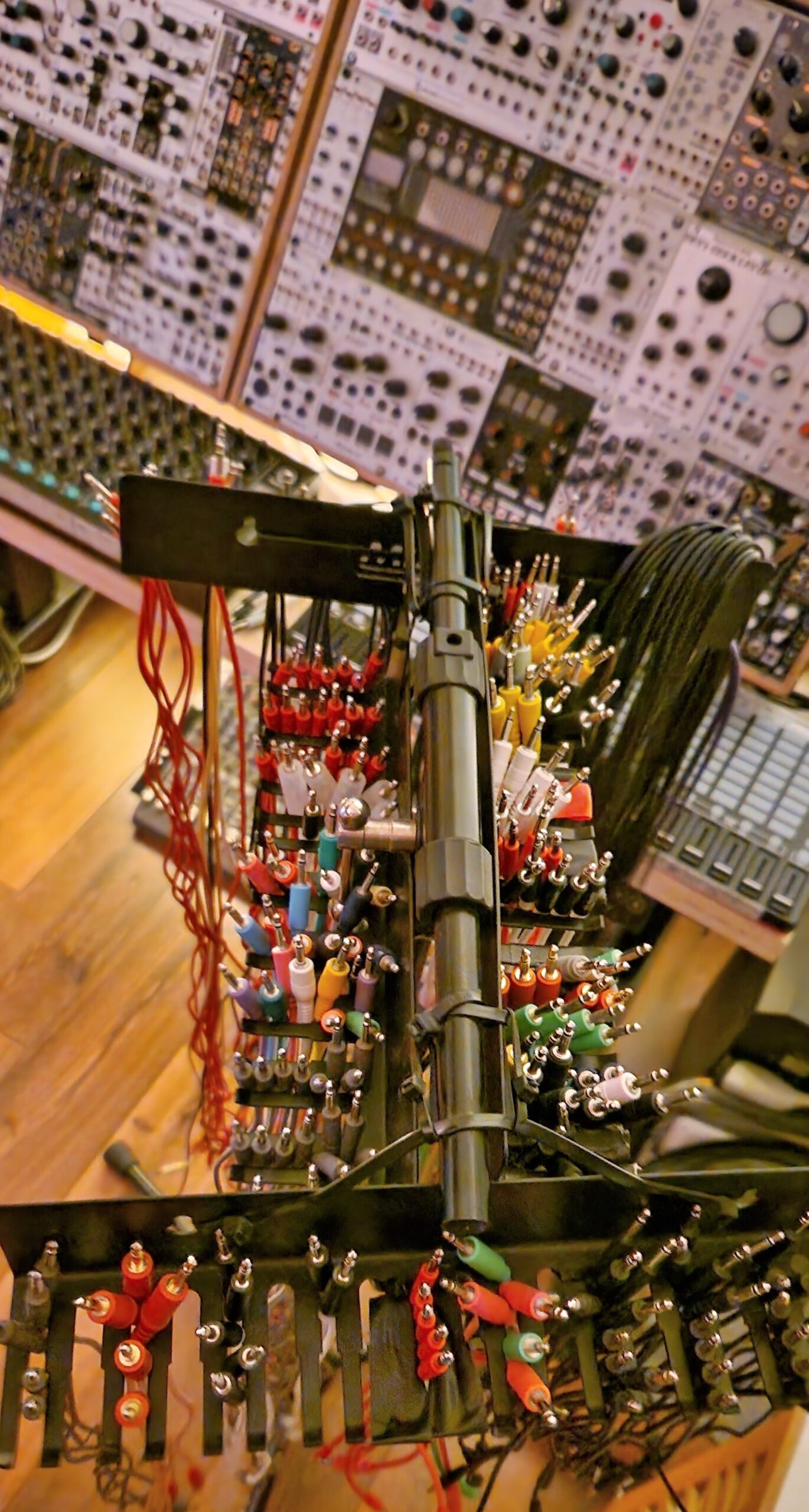
How do you know when a track is finished?
When I don’t see the point/added value to change something. The structure works and is coherent, I like the sound design and the mix is clean, with depth, space, width and all elements are intelligible.
This is the thing that took me the longest to achieve, the “letting go”. The quest of perfection is the worst enemy and can completely kill a track. The thing that helped me was to start working on many (4, 5 6 or 7) tracks in parallel.
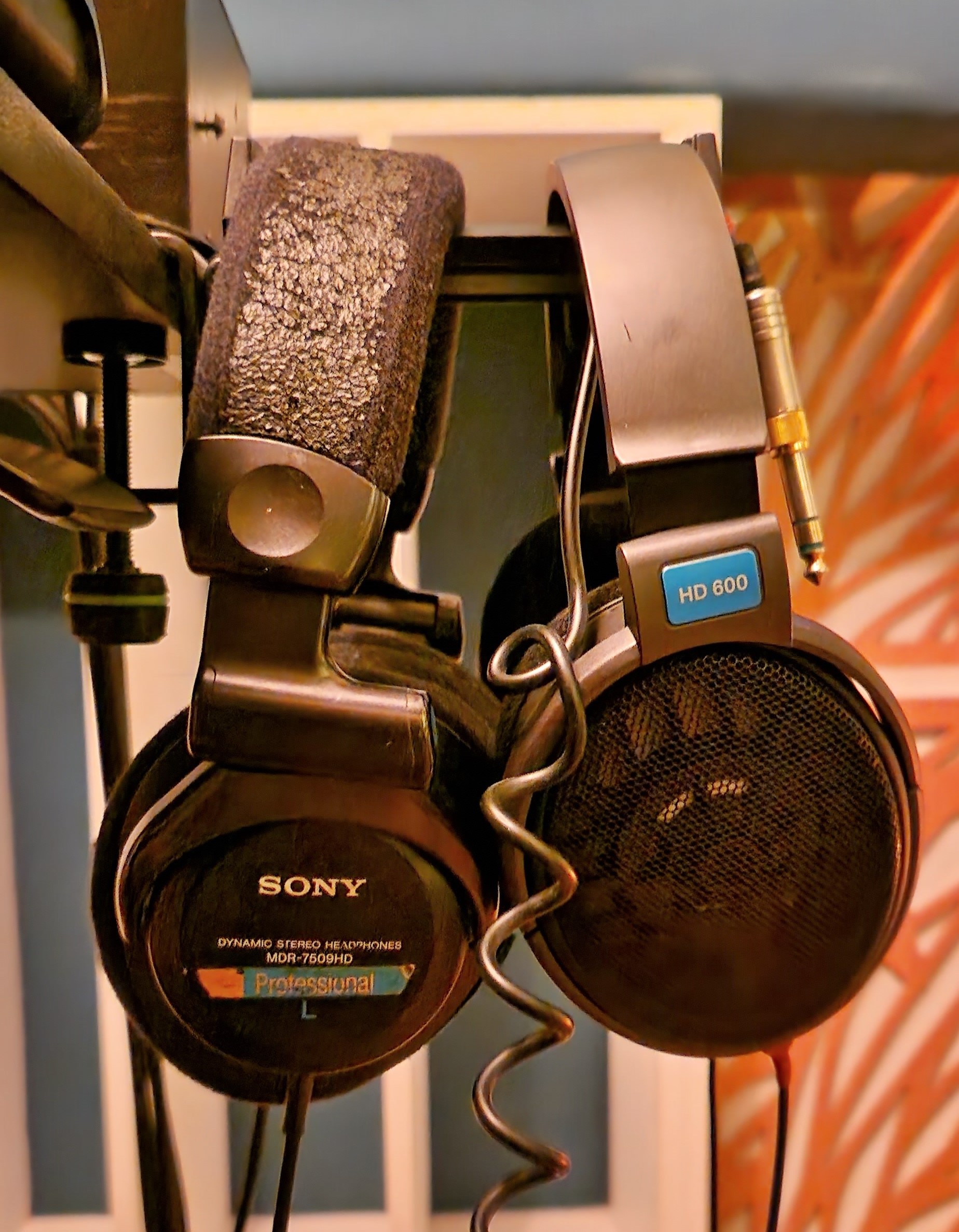
I have a round of listening to all of them and take notes, then I start editing and adjusting what was in my notes (without playing the whole track back). Doing so allows me to keep my ears fresh and avoid the trap that the rabbit hole the loop pushes you into.
Also no spending hours tweaking a sound until the whole track is drafted, because every element needs context. Spending too much time listening to the same thing in a loop is killing objectivity and I tend to get bored by my own work, making me want to change things just because my memory knows how it has been and wants something fresh, but this is not how people receive a “finished “ track.
So avoid at all costs the loop, taking breaks of sometimes days not listening to a track helps. Only at that moment can you really know if doing something helps the track or is just satisfying your brain as giving something fresh to your memory.
Also accepting to let go of things. You can spend hours doing something, if it doesn’t help the track, don’t force it, just throw it away and try something new. Often this works faster and better.
Show us your current studio
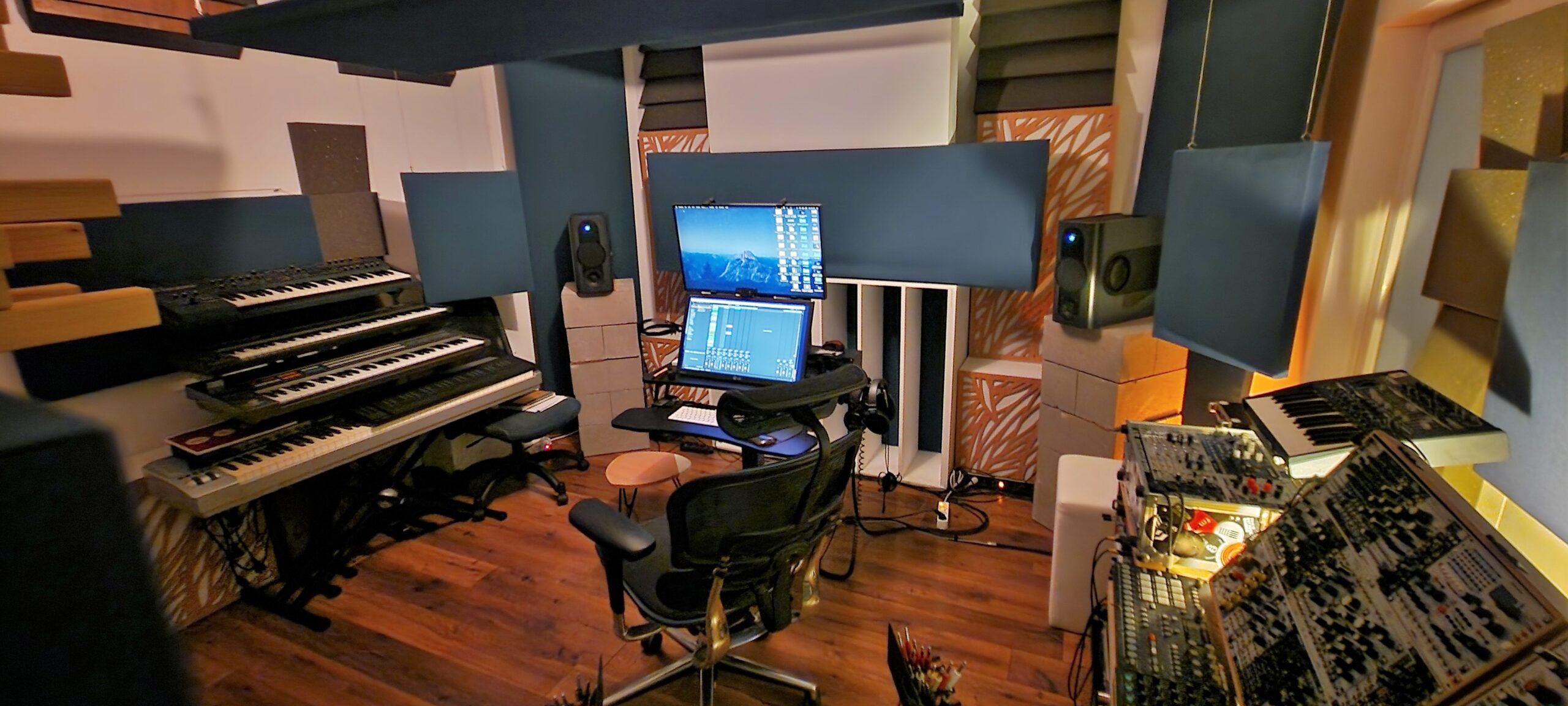
Best creative advice that you’ve ever heard?
Start as fast as you can to draft the track in its full length, listen to it from start to finish without stopping to keep an eye on the big picture or the overall story/structure and then at last, if at some point you feel bored, try instead to add something on top, or to find a way to tweak what’s there, to make it evolve and support the whole story.
Promote your latest thing… Go ahead, throw us a link.
Check out a FurtherSession that I did –
https://furthersessions.bandcamp.com/album/pulsing-light-in-a-frozen-solitude
